
Problem Solving
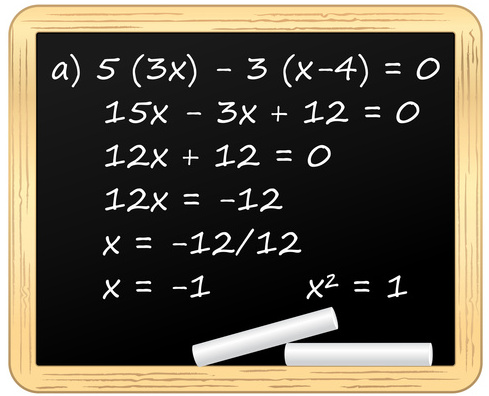
Concepts Tested on GMAT Problem Solving
The problems are based on various arithmetic and algebra math concepts, many of which are presented as word problems. There is no geometry, trigonometry, or calculus on the GMAT. All numbers used are real numbers; irrational numbers are not used.
- Arithmetic concepts on the test include number properties, fractions, percents, ratios, exponents and roots, and basic statistics. Also included are certain types of word problems such as rate and work, mixture, sets, probability, and basic combinatorics.
- Algebra concepts on the test include linear equations, basic quadratic equations, absolute values, and inequalities.
How to Approach GMAT Problem Solving
Read the question carefully and fully understand what is asked. Harder questions may be purposely worded in a confusing manner. For word problems, it is often helpful to translate the information presented into equations or in a tabular format. Make liberal use of the provided scratch board , as performing calculations in your head can lead to careless mistakes. Be systematic in your approach, organize the information logically, and clearly label everything. This becomes even more important as you tackle hard difficultly problems.
Before diving into calculations, examine the five answer choices for clues . Incorrect answers are typically not random numbers, but are instead created to ensnare test takers who make a careless mistake or fall into a common trap. Consider the format of the answers, so you know what you are working towards. Look for any similarities or differences amongst the available answers. If the answer choices are numbers that are far apart, some approximation may make for easier calculations .
Sample GMAT Problem Solving Question
Let’s try a sample problem. Attempt the problem on your own before viewing the answer and explanation.
A hospital purchased 50 stethoscopes and 270 boxes of tongue depressors from a medical supply company. If the price of each stethoscope was nine times the price of each box of tongue depressors, what percent of the total bill was the price of one stethoscope?
(A) 0.8% (B) 1.0% (C) 1.25% (D) 1.45% (E) 2.0%
Explanation to Problem
There are three general approaches to this word problem: conceptual, algebraic, and plugging-in numbers. Let’s discuss each in turn.
Conceptual approach:
The conceptual approach, likely to be taken by advanced students, is the fastest. Since the question focuses on the price of a stethoscope, we can convert the total tongue depressor cost into an equivalent stethoscope cost. The price of each stethoscope is nine times the price of each box of tongue depressors (side note – we can safely assume that all stethoscopes are equally-priced and that all tongue depressor boxes are equally-priced). Thus nine tongue depressor boxes cost the same as one stethoscope.
Divide 270 (the number of tongue depressor boxes) by nine to calculate that the cost of these 270 boxes is equivalent to the price of 30 (270 ÷ 9) stethoscopes. Therefore, the total bill is equivalent to the cost of 80 stethoscopes: the 50 stethoscopes bought plus 30 more (representing the 270 tongue depressor boxes). As a result, one stethoscope is \(\frac{1}{80}\) of the total bill.
We now need to convert this into a percent. But first let’s review the other two approaches, to make the conceptual approach more understandable.
Algebraic approach:
This approach, likely to be taken by intermediate students, puts the conceptual approach into algebraic form. For this algebra word problem, let’s assign variables to the unknowns:
S = price of one stethoscope B = price of one box of tongue depressors
To calculate the total bill, multiply Price × Quantity for each item and then add the results. We are given the quantities, and can use our variables for the prices:
Total bill = 50 S + 270 B
We are told that the price of each stethoscope is nine times the price of each box of tongue depressors. Using our variables, we can write an equation to express this relationship:
S = 9 B
A common mistake is to write this equation backwards, as B = 9 S . Since stethoscopes are more expensive, however, we need to make the bigger value S equal to nine times the smaller value B . A small number B cannot equal a big number S times 9.
Since the question asks about stethoscopes and not tongue depressors, we want to get rid of B , the variable that we don’t care about. To do this, isolate B and substitute it away. Divide both sides of our equation by 9 (same as multiplying both sides by \(\frac{1}{9}\)). \(\frac{1}{9}\) S = \(\frac{1}{9}\)(9 B ) = B
Now let’s do an algebraic substitution into the total bill equation: Total bill = 50 S + 270(\(\frac{1}{9}\) S ) = 50 S + 30 S = 80 S
The question asks: the price of one stethoscope is what percent of the total bill ? We are looking for a percent, as further verified by the format of the answers. When calculating a percent, a good approach is to form a fraction with the “is” number on top and the “of” number on the bottom: Percent = \(\frac{\text{is}}{\text{of}}\) = \(\frac{\text{stethoscope price}}{\text{total bill}}\) = \(\frac{S}{80S}\) = \(\frac{1}{80}\) (since the S variable cancels out)
We’ll convert this into a percent after reviewing the plugging-in numbers approach.
Plugging-in numbers approach:
This approach is likely to be taken by less-advanced students, but is actually a great approach for this problem. When the answers represent a ratio or percent, and we don’t have specific numbers provided within the problem, then a very good technique is to pick numbers to work through the math. The price of each stethoscope is nine times the price of each box of tongue depressors, so let’s pick easy numbers. We do not need to worry about whether the numbers are accurate in the real world, just whether the numbers meet the relationship described in the problem.
Tongue depressor box = $1 Stethoscope = $9
Now calculate the total bill, using the price numbers we made up and the quantities provided in the problem.
Total bill = 50 × $9 + 270 × $1 = $450 + $270 = $720
The question asks: the price of one stethoscope is what percent of the total bill? As mentioned in the algebraic approach, we can calculate the percent by forming a fraction with the “is” number on top and the “of” number on the bottom: Percent = \(\frac{\text{is}}{\text{of}}\) = \(\frac{\text{stethoscope price}}{\text{total bill}}\) = \(\frac{$9}{$720}\) = \(\frac{1}{80}\) (since 9 goes into 72 eight times)
Converting the fraction into a percent:
There are several approaches to convert \(\frac{1}{80}\) into a percent. Worst case, we could do long-hand division. But there are a couple faster approaches.
Notice that \(\frac{1}{80}\) = \(\frac{1}{8}\) × \(\frac{1}{10}\). We recommend that students memorize the decimal equivalents of common fractions. So we should ideally know that \(\frac{1}{8}\) = 0.125. Multiplying by \(\frac{1}{10}\) is the same as moving the decimal one place to the left, resulting in 0.0125. Converting a decimal into a percent is done by moving the decimal two places to the right, so 0.0125 = 1.25%.
Another good shortcut takes advantage of the fact that a percent is equivalent to a fraction with a denominator of 100. How can we turn our denominator of 80 into 100? We can increase 80 by 25%, the same as multiplying 80 by 1.25. To leave the value of our fraction unchanged, we must multiply numerator and denominator by the same number. \(\frac{1}{80}\) = \(\frac{1(1.25)}{80(1.25)}\) = \(\frac{1.25}{100}\) = 1.25%
Finally, if we are very short on time and don’t see an easy way to do the conversion, we could at least quickly eliminate three answers by recognizing that: \(\frac{1}{100}\) < \(\frac{1}{80}\) < \(\frac{1}{50}\) → \(\frac{1}{100}\) < \(\frac{1}{80}\) < \(\frac{2}{100}\) → 1% < \(\frac{1}{80}\) < 2%
Our correct answer has to be somewhere between 1% and 2%, leaving only answers C and D. As we have seen above, C is the correct answer.
- Menlo Coaching
- Practice Questions
- Problem Solving
- Sign up for GMAT Prep
July 4th Sale on GMAT Prep! 20% Off GMAT Prep Course Enrollment (Ends July 8)
Sample GMAT Problem Solving Questions
We’ve already covered why studying with official practice questions is the best way to prepare for the GMAT . But even if you come up with the correct answer to an official problem, you still might not understand the underlying principles used to create that particular question, leaving yourself open to traps and pitfalls set by the test writers. In the explanations below, I will use some of the core tenets of the Menlo Coaching GMAT curriculum to breakdown two official GMAT problem solving questions and provide important principles for correctly attacking this question type in the future.
Multiple choice “problem solving” questions are, to most students, familiar, yet they generally do not approach them properly. To succeed on these questions, you obviously need the requisite knowledge related to the content area being tested—math skills related to arithmetic, algebra, etc. However, it is just as important to read carefully, leverage every hint, and choose the right strategy (backsolving, number picking, conceptual thinking, etc.) People think of multiple-choice problem solving questions as just plain math questions, but this GMAT sample question shows that they are much more than that. Take a look at the following questions, and check out our problem solving video below.
GMAT Problem Solving, Sample Question #1
Rates for having a manuscript typed at a certain typing service are $5 per page for the first time a page is typed and $3 per page each time a page is revised. If a certain manuscript has 100 pages, of which 40 were revised only once, 10 were revised twice, and the rest required no revisions, what was the total cost of having the manuscript typed?
Finish the GMAT in 10 Weeks with Our Study Schedule

GMAT Problem Solving, Sample Question #2
A certain airline’s fleet consisted of 60 type A planes at the beginning of 1980. At the end of each year, starting with 1980, the airline retired 3 of the type A planes and acquired 4 new type B planes. How many years did it take before the number of type A planes left in the airline’s fleet was less than 50 percent of the fleet?
Sample GMAT Questions by Topic
- Data Sufficiency: Practice for the GMAT with Official Data Sufficiency Sample Questions
- Data Insights: How to Approach Data Insights: Practice Questions and Explanations
- Reading Comprehension: How GMAT Reading Comprehension Questions Mislead Test Takers: Practice Questions and Explanations
- Critical Reasoning: How to Succeed Against Official GMAT Critical Reasoning Questions
Need even more problem solving help? Read our guest post on MBA.com to learn why, in GMAT problem solving, flexibility is key! Plus, practice with more official GMAT problem solving questions from Poets&Quants.
Book a GMAT Strategy Call with Hailey
Replies in 24 hours
[email protected]
✓ Get feedback on your profile as a test-taker
✓ Ask questions about strategy, timelines, or the GMAT itself
✓ Learn what you need to work on to improve your score
✓ Find out whether you’d be a fit with live classes or private tutoring
- Exam Prep >
- Prepare for Business School >
- Business School & Careers >
- Explore Programs >
- Connect with Schools >
- How to Apply >
- Help Center >
- About the Exam
- Register for the Exam
- Plan for Exam Day
- Prep for the Exam
- About the Executive Assessment
- Register for the Executive Assessment
- Plan for Assessment Day
- Prepare for the Assessment
- NMAT by GMAC
- Shop GMAT™ Official Prep
- About GMAT™ Official Prep
- Prep Strategies
- Personalized Prep Plan
- GMAT Mini Quiz
- Executive Assessment Exam Prep
- NMAT by GMAC Exam Prep
Prepare For Business School
- Business Fundamentals
- Skills Insight
Business School & Careers
- Why Business School
- Student Experience
- Business Internships
- B-School Go
- Quiz: Are You Leadership Material?
- MBA Return on Investment (ROI) Calculator
- Estimate Your Salary
- Success Stories
- Diversity and Inclusion
- Women in Business
Explore Programs
- Top Business School Programs
- Quiz: Which Post Graduate Program is Right for You?
- Quiz: Find the Best Program for Your Personality
- Business School Rankings
- Business Master's Programs
- MBA Programs
- Study Destinations
- Find Programs Near Me
- Find MBA Programs
- Find Master's Programs
- Find Executive Programs
- Find Online Programs
Connect with Schools
- About GradSelect
- Create a GradSelect Profile
- Prep Yourself for B-School
- Quiz: Can You Network Like An MBA?
- Events Calendar
- School Events
- GMAC Tours Events
- In-Person Events
- Online Events
How to Apply
- Apply to Programs
- The Value of Assessments
- Admissions Essays
- Letters of Recommendation
- Admissions Interviews
- Scholarships and Financing
- Quiz: What's Your Ideal Learning Style?
Help Center
- Create Account
- Exams & Exam Prep
- GMAT Exam Prep
GMAT Problem Solving: Flexibility is the Key

Chris Kane - Menlo Coaching
Chris Kane is a mba.com Featured Contributor.

Of the five different question types you will encounter on the GMAT exam, Problem Solving feels the most familiar to test-takers. After all, most of us have done a considerable number of multiple-choice math questions in our academic careers, so this format is not new. However, what most people don’t understand about these particular “math” questions is that the GMAT does not exist to assess who is the best at math; rather, it exists to assess who is good at creative problem solving, who reads carefully and pays attention to details, who leverages every hint and resource at their disposal, who remains critical and finds contrarian cases – in other words, who possesses the skills required to excel in business school.
Having the requisite math knowledge and a high level of fluency with the underlying concepts and skills tested in Problem Solving is obviously important, however, scoring even above the 50th percentile on the GMAT quant section requires much more than core math knowledge and fluency.
As I discuss in my previous article , GMAT test writers embed a set of critical thinking and logic skills in GMAT Data Sufficiency that make those questions feel like much more than just math problems. Because GMAT Data Sufficiency questions are more unusual to students, Problem Solving questions feel more like good old-fashioned high school level math problems, but a closer look shows they too involve much more.
Tip #1: Read Carefully!
As I emphasize over and over with GMAT quantitative questions (both Data Sufficiency and Problem Solving), there is a lot of clever difficulty hiding in the wording and the details of the question. A long career teaching the GMAT has proved to me that people are not good at dealing with this type of difficulty. Overall, people preparing for the GMAT are not used to multiple choice math problems that are designed to “trick” you and elicit certain mistakes unrelated to the math. In business, it really doesn’t matter if you know how many positive factors 441 has, but it sure does matter if you misread a contract or fall for some con or trap set by a competing business!
If you don’t learn to focus on this more devious type of difficulty in your preparation, you will miss countless GMAT quant questions for which you understand the math principles, but still get the question wrong because it is assessing other attributes. Consider a few examples of cleverly worded question stems from official problems (one data sufficiency and two problem solving examples) that show how GMAT question writers assess who reads carefully and who pays attention to details:
- The cost of a certain phone call was $0.75 for the first 3 minutes and $0.20 for each additional minute after the first three minutes. Did the phone call last longer than 15 minutes?
A vast majority of people get this Data Sufficiency question wrong because they interpret the highlighted portion as meaning $0.75 per minute for the first 3 minutes. It doesn’t say that, but you expect it to! If you think the first 3 minutes cost $2.25, you have fallen for the trap and you get the question wrong.
- A certain library assesses fines for overdue books as follows. On the first day that a book is overdue, the total fine is $0.10. For each additional day that the book is overdue, the total fine is either increased by $0.30 or doubled, whichever results in the lesser amount. What is the total fine for a book on the fourth day it is overdue?
Many students miss this question as well, again due to interpretation. People think you are calculating the fine per day and adding it to the previous day, but it is a cumulative fine that you are supposed to be calculating. This problem seems so simple, but it must be difficult somehow and indeed it is…all relating to reading carefully and following the instructions properly.
- A worker carries jugs of liquid soap from a production line to a packing area, carrying 4 jugs per trip. If the jugs are packed into cartons that hold 7 jugs each, how many jugs are needed to fill the last partially filled carton after the worker has made 17 trips?
When people miss this, it is almost never because of the math. After 17 trips, the worker has carried 68 jugs, which divided by 7 gives you a remainder of 5. You feel good about hammering out the math quickly and pick 5 because that is the remainder. But wait a second…the question wasn’t asking for that! It was asking for how many more jugs are needed to fill the carton . That is 2 not 5. Again, you would not believe how many students get this question wrong, mainly because they are being too casual in their approach.
If you want to succeed in GMAT Problem Solving and differentiate yourself from the competition, you must develop an strong focus on wording and recognize when that is the primary difficulty in a question. Always make sure you are answering the proper question and never forget little details or restrictions provided in the question stem. If you do this well, you will be amazed how much higher your quant score can go. Once you become a pro at interpretation and stop falling for wording traps, then you must try to master the hardest part of Problem Solving: choosing the right approach.
Tip #2: Be Flexible in Your Approach
I believe the most important component to success in GMAT Problem Solving is learning how to choose the best strategy for getting a solution quickly and efficiently – and be flexible in that choice. This decision will always be hard on these multiple-choice questions, but you can get a lot better at it with practice and good coaching.
There are numerous ways to solve GMAT problem solving questions: you can use algebra or other “traditional” math approaches; you can pick numbers to remove abstraction in percent or variable word problems; you can use conceptual thinking or logic (what I call the Leather Chair approach); you can actively leverage the answer choices (i.e. backsolving).
When GMAT Problem Solving questions are created, they are designed to push people who always approach questions the same way. Business schools want creative, flexible problem solvers, not rote math machines! As an example: a hard 700+ level Problem Solving question on the exam will make you use fairly hard math (algebra, arithmetic, etc.) to go most of the way to the answer, but then the only way to get it correct at the end is to leverage the answers. The problem can’t be solved without answer choices to leverage, yet the “math machine” student will knock his or her head against the computer trying to solve the problem in a vacuum without actively using the answers. More commonly, questions are created in which one approach is extremely difficult or time consuming, while another approach is quite simple.
Before you jump headfirst into a problem, always take the time to consider which approach will work best. You will not always make the right choice initially, but your instincts will become better and better as you complete more GMAT official practice problems. Remember: You can’t be a one-trick pony on this test if you want to score highly!
To become more flexible in your approach, you must practice and master all the different ways available to solve a GMAT Problem Solving question:
- When there are variables in answer choices or the original number does not matter (for example, in percent questions), it is often much easier to pick your own numbers, solve, and then find the correct answer using those numbers. Are you fluent with this technique and have you practiced it with numerous questions?
- When using the answers (i.e., backsolving) is required or makes the problem much easier, do you recognize this and use the answers actively?
- Are you good at solving problems conceptually from your leather chair when such an approach is available?
- Are you ready to just do the math when that is the best or only way to solve a problem?
Mastering all these techniques and training yourself to be flexible with them is essential to success and requires active practice during your preparation.
Tip #3: Know What You Need to Know
After reading the question carefully and considering the best approach for solving it, you then need to execute some type of underlying math calculations or apply particular math concepts. As I mentioned earlier, it is essential that you have a thorough understanding of these concepts and a high level of fluency with the necessary calculations. Most students need to do considerable work on this in their preparation, but it is important to remember that the underlying math concepts used to create these questions are not particularly difficult – most people just haven’t used them in a while so the concepts are rusty.
The best way to improve this fluency is to do full official GMAT problems so that you practice three separate things: reading carefully and interpreting wording correctly, choosing the best approach to the problem, AND solving the underlying math components quickly and efficiently. After every official GMAT Problem Solving question that you do, ask yourself three questions:
1. Why did I really get this question wrong? Was it because I didn’t understand a math concept or because I fell for some other trap? Did I choose the right approach?
2. If I was slow on the problem, what led to the pacing issue and how can I improve my speed next time?
3. Overall, what repeatable takeaways exist from this problem and how can I apply those to future questions?
Remember: Don’t Mistake Activity for Achievement. You can do a lot fewer problems in your preparation if you always isolate the proper takeaways. To do this effectively, make sure to use official problems that help you develop all the different skills required in GMAT Problem Solving, not simply the underlying math.
GMAT Problem Solving Best Practices
Let’s summarize a set of GMAT Problem Solving best practices and then apply them to one full problem:
1. Very carefully assess the question , looking out for wording traps and noting any important restrictions or details in the problem (for instance, if it says “x is a positive even integer,” focus on how that changes the answer to the question compared to the case in which x was not restricted to being an integer, positive, and even).
2. Look out below! After analyzing the question stem, look carefully at the answers and consider how those answers will dictate your approach to the problem and what action is actually required to choose one of them. What hints do the answer choices give you for how to best attack the problem?
3. Spend a considerable amount of time deciding what approach you should use . Is number picking a valid option? How actively can I leverage the answers? Are there any conceptual shortcuts? Do I just need to grind out some math? As a rule, people jump into questions too quickly and your first inclination for how to solve most GMAT Problem Solving questions will be wrong.
4. Make sure you are leveraging every little hint provided by both the question stem and the answers. Often these questions are almost impossible to solve if you don’t leverage all the given clues. As an example, maybe it is impossible to actually solve for the correct answer, but fairly easy to prove that 4 answers are incorrect.
5. After choosing an approach, be ready to pivot quickly if that approach is not working . It is hard to always choose the proper approach initially, and sometimes the best approach only becomes clear once you have dug into a problem.
6. Execute any basic calculations or conceptual math quickly and efficiently . Avoid unnecessary calculations and learn how to avoid careless errors when doing computations (mental math and focusing on the given answers is often helpful).
7. Before selecting your answer and hitting “Next,” do two things: (a) reread the question stem and make sure you are answering the proper question and (b) ask yourself if there is truly a reward in your answer (i.e., is it tricky enough to differentiate yourself from other smart test takers). In doing these two simple things, you will avoid trap answers and false negatives on the exam – questions you should have gotten correct but didn’t.
Sample GMAT Problem
Consider the following problem and try to solve it yourself in a few minutes using the best practices above:
During the four years that Mrs. Lopez owned her car, she found that her total car expenses were $18,000. Fuel and maintenance costs accounted for 1/3 of the total and depreciation accounted for 3/5 of the remainder. The cost of insurance was 3 times the cost of financing, and together these two costs accounted for 1/5 of the total. If the only other expenses were taxes and license fees, then the cost of financing was how much more or less than the cost of taxes and license fees
(A) $1,500 more
(B) $1,200 more
(C) $100 less
(D) $300 less
(E) $1,500 less
Explanation:
Let’s go through the question applying the best practices in the same order as described above:
1. With so much convoluted wording in this question stem, you should recognize that proper interpretation is key and wording tricks will surely be present. The first thing you should notice is that it says “3/5 of the remainder” not the “total” in the 2nd line, so you will need to account for that in your calculations. Additionally, you should note that there are many components to this question, so you better slow down and execute each part carefully.
2. The answer choices don’t provide too many hints, but there a few takeaways: you will not be able to backsolve (they are asking for a difference) and it must be easy to make computational mistakes with that difference, since 2 answers say “more” and three say “less”. Make sure you calculate the difference carefully.
3. For the approach, I have already noted that backsolving is not an option nor is number picking because you must work with the given total of $18,000. This question will require an algebraic approach and setting up those equations and/or calculations properly will be key.
4. Carefully using all the provided information, let’s execute the math:
|
|
|
|
| |||
| Fuel and maintenance costs (let’s use M as a variable) |
| ⅓ of $18,000 = $6000 |
| |||
| Depreciation |
| ⅗ of the remainder = ⅗ of $12,000 = $7200 |
| |||
| Insurance + Financing (let’s use I and F as variables) | ⅕ of total (not the remainder) = ⅕ of $18,000 = I+F = $3600 | Since I = 3F we can substitute and say 3F+F = $3600 so |
The last step is to figure out the amount of taxes and licensing fees (let’s use T for that sum):
- M = $6000, D = $7200, and I + F = $3600.
- That is $16,800, which leaves $1200 for T.
- The question is asking for the difference between T and F, so you can see that F ($900) is $300 less than T ($1200).
Correct answer is thus D.
5. (and 6/7) There was no need to pivot in your approach at any point since you must just do the calculations carefully in this problem. It is very important that you re-read the question and you double check that no careless errors were made in the calculations to get there. People get this question wrong because there are so many steps and thus many opportunities to make calculation mistakes or interpretation mistakes. Note: all of the calculations in this problem can easily be done mentally, so if you are writing much down beyond the totals for each component in this problem, you should work on your calculation fluency.
Final Thoughts
To succeed in Problem Solving you must learn how to be flexible and creative in your approach to each problem, and you must focus on precision in wording. Everyone understands that you must possess the requisite math knowledge to do well, but in general people spend too much time on raw math and not enough time on math + everything else that makes these questions difficult (and relate more to what GMAC is really trying to assess with this exam).
While it is smart to start your studying process with some raw math skills work, make sure you quickly move into full official GMAT problems, so you can work not just on the underlying math, but also on “everything else.” With the right type of preparation , you can master all the different elements required to succeed in GMAT Problem Solving questions and knock your quant score out of the park!
Chris Kane is an mba.com Featured Contributor.
Problem Solving Practice Test 1
The GMAT Problem Solving questions will test your ability to evaluate information and solve numerical problems. Our practice problems are designed to be very challenging in order to prepare you for the harder-level questions found on the GMAT. Answers and detailed explanations are include with each problem. Start your test prep now with our free GMAT Problem Solving practice test.
Directions: Solve the problem and select the best of the answer choices given.
| – (1 – z) | |
| (1 – z) | |
| = z – (z - 2) | |
| = (z – 4) – z | |
| + 4 + 2 = 6 | |
| = z – (z - 1) | |
| + (z + 4) = z |
| 1 | 2 | 3 | 4 | 5 |
| 6 | 7 | 8 | 9 | 10 |
| End |
Next Practice Test: Problem Solving Practice Test 2>>
More Practice Tests: More Quantitative Tests>> Integrated Reasoning Tests>> Verbal Tests>> Main Menu>>
- Skip to content
GMAT Prep Courses & Tutoring
Free GMAT Practice Questions
Practice makes perfect—or at least that's how the old saying goes—and it certainly applies to our free GMAT practice questions. Our Free Practice Questions are designed to give you the thorough understanding of how to go about solving a problem that you crave. Our thorough explanations show you what to expect from each GMAT question, detailing question-specific hurdles and common traps. Thankfully, our practice questions provide a wide variety of question types spanning across all sections, securing an abundance of insight-turned-strategy you can implement on test day to turn into high-scoring gold.
Manhattan Review prides itself in providing quality free practice questions to all prospective students, so please take a crack at the 52 free questions we have to offer as a courtesy to all GMAT learners. In the end, the only way to find out where you need your score to be is to discover where it currently is. Take advantage of this free resource that's sure to help you along your way to a high score.
You have not answered any question so far. You can answer all questions in a row (click on "All Questions") or only all questions of a particular section (click on that Section) or a single selected question (click on that Question).
| Word Problems | Challenging | ||
| Combinatorics; Permutation and Combination | Challenging | ||
| Number Properties | Challenging | ||
| Word Problems | Easy | ||
| Geometry | Challenging | ||
| Geometry | Challenging | ||
| Statistics | Challenging | ||
| Number Properties | Hard | ||
| Number Properties | Medium | ||
| Number Properties | Hard | ||
| Number Properties | Challenging | ||
| Computation; Linear Equations | Challenging | ||
| Linear Equations; Number Properties | Challenging | ||
| Inequality; Linear Equations | Challenging | ||
| Ratio Proportion | Challenging | ||
| Number Properties | Challenging | ||
| Inequality | Challenging | ||
| Statistics | Hard | ||
| Probability | Hard | ||
| Functions | Challenging | ||
| Strengthen | Challenging | ||
| Inference | Challenging | ||
| Inference | Medium | ||
| Weaken | Medium | ||
| Boldface | Challenging | ||
| Find the Assumption | Challenging | ||
| Complete the Argument | Challenging | ||
| Resolve the Paradox | Challenging | ||
| Find the Flaw | Hard | ||
| Evaluate the Argument | Challenging | ||
| 6 Questions - Variable Level | |||
| 6 Questions - Variable Level | |||
| Agreement; Grammatical Construction; Idiom; Logical Prediction | |||
| Diction; Grammatical Construction; Idiom; Logical Prediction | |||
| Logical Prediction; Parallelism | |||
| Diction; Logical Prediction | |||
| Subject Verb Agreement; Verb Form | |||
| Logical Prediction; Rhetorical Construction | |||
| Grammatical Construction; Logical Prediction | |||
| Idiom; Logical Prediction | |||
| Grammatical Construction; Parallelism | |||
| Agreement; Rhetorical Construction | |||
GMAT is a registered trademark of the Graduate Management Admission Council (GMAC), which is unaffiliated with and does not endorse this website.

GMAT Quant Questions: Problem Solving
Note: GMAT Quant questions cover Problem Solving, and so much more. To get more math practice, try our free GMAT practice test with accurate score prediction and subject-by-subject performance breakdown.
On the GMAT Quantitative section, the Problem Solving questions are just the familiar five-choice multiple choice math problems you have seen on every standardized test since well before puberty. Here, you have discovered a veritable treasure chest of Problem Solving sample questions.
Below is a link to thirty-two different articles on this blog, each with at least two Problem Solving questions. The sample GMAT Problem Solving questions are often at the top of the article, although sometimes they are further down in the text. The total number of sample Problem Solving problems available from this page is far more than 37, the total number of math questions you will see on a full Quantitative section of the GMAT.
In each blog, the solutions & explanations to the sample questions are at the ends of the articles. (If the topic is less than crystal clear for you, you may find the article itself enlightening.)
1. Problems with Averages
https://magoosh.com/gmat/math/gmat-averages-and-sums-formulas/
2. Distance, Rate, Time
https://magoosh.com/gmat/math/word-problems/gmat-distance-and-work-rate-formula/
3. Permutations & Combinations
https://magoosh.com/gmat/math/gmat-permutations-and-combinations/
4. Factors & Prime Factorizations ( five practice PS questions at the bottom of the article )
https://magoosh.com/gmat/math/arithmetic/gmat-math-factors/
5. Advanced Geometric Solids
https://magoosh.com/gmat/math/geometry/gmat-math-advanced-geometric-solids/
6. Estimation questions
https://magoosh.com/gmat/math/the-power-of-estimation-for-gmat-quant/
7. Difficult Dice Questions
https://magoosh.com/gmat/math/basics/gmat-probability-difficult-dice-questions/
8. Difference of Two Squares
https://magoosh.com/gmat/math/algebra/gmat-quant-difference-of-two-squares/
9. Sequences ( five PS practice questions scattered through article )
https://magoosh.com/gmat/math/word-problems/sequences-on-the-gmat/
10. Remainders
https://magoosh.com/gmat/math/basics/gmat-quant-thoughts-on-remainders/
11. Work & Work Rate
https://magoosh.com/gmat/2012/gmat-work-rate-questions/
12. Circle & Line Diagrams
https://magoosh.com/gmat/math/geometry/circle-and-line-diagrams-on-the-gmat/
13. Polygons
https://magoosh.com/gmat/math/geometry/polygons-and-regular-polygons-on-the-gmat/
14. Set Problems, with Double Matrix Method
https://magoosh.com/gmat/math/word-problems/gmat-sets-double-matrix-method/
15. Set Problems, with Venn Diagrams
https://magoosh.com/gmat/math/word-problems/gmat-sets-venn-diagrams/
16. Scale Factor & Percent Change
https://magoosh.com/gmat/math/geometry/scale-factors-on-the-gmat-percent-increases-and-decreases/
17. Standard Deviation
https://magoosh.com/gmat/math/standard-deviation-on-the-gmat/
18. Radicals
https://magoosh.com/gmat/math/algebra/simplifying-radical-expressions-on-the-gmat/
19. Function Notation
https://magoosh.com/gmat/math/arithmetic/function-notation-on-the-gmat/
20. Algebraic Factoring
https://magoosh.com/gmat/math/algebra/algebra-on-the-gmat-how-to-factor/
21. Hard Factorial Problems
https://magoosh.com/gmat/math/arithmetic/gmat-factorials/
22. Backsolving from the answers
https://magoosh.com/gmat/math/gmat-plugging-in-strategy-always-start-with-answer-choice-c/
23. Distance in the x-y plane
https://magoosh.com/gmat/math/geometry/gmat-coordinate-geometry-distance-between-two-points/
24. Pythagoras !
https://magoosh.com/gmat/math/geometry/pythagorean-triplets-to-memorize-for-the-gmat/
25. Lines in the x-y plane
https://magoosh.com/gmat/math/geometry/gmat-math-lines-slope-in-the-x-y-plane/
26. Tricks for Calculating Combinations
https://magoosh.com/gmat/math/gmat-math-calculating-combinations/
27. Parallel & Perpendicular Lines and Midpoints in the x-y plane
https://magoosh.com/gmat/math/geometry/gmat-math-midpoints-and-parallel-vs-perpendicular-lines/
28. Probability: AND & OR Rules
https://magoosh.com/gmat/2012/gmat-math-probability-rules/
29. Probability: “at least” statements
https://magoosh.com/gmat/math/basics/gmat-math-the-probability-at-least-question/
30. Probability: counting problems
https://magoosh.com/gmat/math/gmat-probability-and-counting-techniques/
31. Hard counting problems
https://magoosh.com/gmat/math/word-problems/gmat-counting-with-restrictions/
32. Probability: geometric probability
https://magoosh.com/gmat/math/geometry/geometric-probability-on-the-gmat/
Also check out these GMAT Probability questions .
Other GMAT Practice Questions
Magoosh has practice materials for all of the GMAT question types in GMAT Quantitative and in GMAT Verbal. Look at the table below, and click the links for more practice!
| In addition to the GMAT Problem Solving resources in this post, check out our tutorials and new practice questions we’re releasing.
| GMAT Critical Reasoning tests your ability to analyze written arguments.
| For this GMAT Verbal question type, you read longer passages and answer comprehension questions about them.
|
| GMAT Data sufficiency questions ask you whether you have been given enough information to solve a math problem.
| We have plenty of free GMAT Practice materials right here on the blog. You may also want to check out our reasonably-priced Magoosh GMAT plans. With a plan, you get hundreds of video lessons, nearly a thousand practice questions, and full-length mock GMAT tests.
|
And make sure you do practice questions that cover the most common GMAT Quant concepts too.

Mike served as a GMAT Expert at Magoosh, helping create hundreds of lesson videos and practice questions to help guide GMAT students to success. He was also featured as “member of the month” for over two years at GMAT Club . Mike holds an A.B. in Physics (graduating magna cum laude ) and an M.T.S. in Religions of the World, both from Harvard. Beyond standardized testing, Mike has over 20 years of both private and public high school teaching experience specializing in math and physics. In his free time, Mike likes smashing foosballs into orbit, and despite having no obvious cranial deficiency, he insists on rooting for the NY Mets. Learn more about the GMAT through Mike’s Youtube video explanations and resources like What is a Good GMAT Score? and the GMAT Diagnostic Test .
View all posts
More from Magoosh
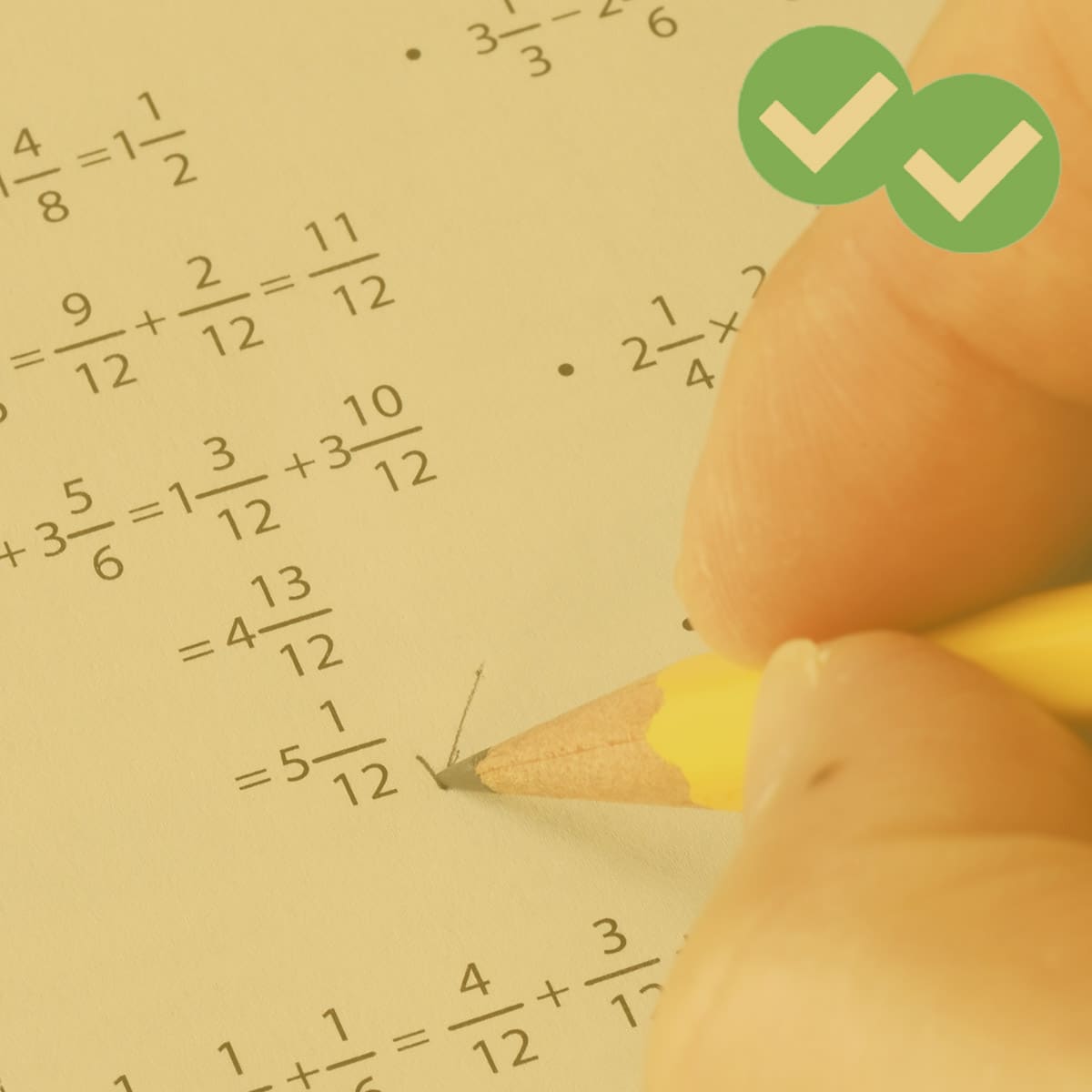
Leave a Comment
Please leave any questions or suggestions in the comments, we try our best to respond within a few days! Your email address will not be published.
Leave a Reply Cancel reply
Your email address will not be published. Required fields are marked *
One response to “GMAT Quant Questions: Problem Solving”
this work is fantastics job, i need more of the solved problems

| It is currently 27 Aug 2024, 22:27 |
| Forum Home
|
Practice thousands of GMAT questions with top expert solutions.
Identify and improve upon mistakes efficiently using our Error Log.
Get the latest tips and news from our top GMAT professionals.
- it’s free and easy!
Problem Solving (PS)
View after sorting.
GMAT Prep Online Guides and Tips
Gmat math tricks: the 9 best tips and shortcuts.
Luckily, this means that there are several GMAT math tricks, tips, and shortcuts that you can use to improve your performance. In this post, we’ll give you all the major GMAT quant tricks, including tips and shortcuts for each of the two question types as well as some that apply to both. With these GMAT math tricks in your arsenal—plus the boatloads of studying you’re surely doing—you’ll be well prepared to nail the Quant section on test day.
GMAT Math Tricks: What Can They Help You With?
The makers of the GMAT will tell you that there are no such things as “tips” or “tricks” for doing well on the Quant section. Unfortunately, there is some truth to this: while GMAT math tricks can help you a little bit, the only real way to ace the GMAT Quant Section is to invest lots of time in focused, targeted preparation. Yep, that means study, study, study.
That said, each of the GMAT quant tricks below are extremely useful. Some help you execute basic calculations (like multiplication and division with unwieldy numbers) more quickly and efficiently; some help you get to the right answer without even having to solve the equation. Additionally, many of these GMAT Quant tricks are particularly helpful for guessing strategically on questions you’re stuck on —so when all else fails, you can feel like you have a solid plan and a fighting chance to get the right answer.
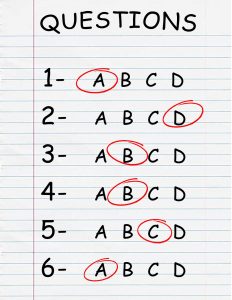
Not sure how or what to study? Confused by how to improve your score in the shortest time possible? We've created the only Online GMAT Prep Program that identifies your strengths and weaknesses, customizes a study plan, coaches you through lessons and quizzes, and adapts your study plan as you improve.
We believe PrepScholar GMAT is the best GMAT prep program available , especially if you find it hard to organize your study schedule and don't want to spend a ton of money on the other companies' one-size-fits-all study plans.

General GMAT Math Tricks
Below are some overall GMAT Quant tricks—as in, tips and shortcuts that apply to both question types.
#1: Simplify Calculations with Multiples of 10
Working with multiples of 10 is easy in addition, subtraction, multiplication and division. Even when you’re given a less pretty number, you can still use multiples of 10 to solve it painlessly.
Addition and Subtraction with 10
To add two and three digit numbers that aren’t already a multiple of 10 or 100, round the number to the nearest 10s or 100s digit, do the addition, and then add or subtract the result by the number you rounded off. Do the opposite when subtracting.
$$525 + 311$$ $$= 500 + 311 + 25$$ $$= 811 + 25$$ $$= 836$$
Multiplying and Dividing with 10 via the Distributive Property
To multiply by an awkward number, such as 16, you can multiply first by 10, and then multiply by 6, and then add the two products together:
$$n × 16 = (n × 10) + (n × 6)$$
You may remember that the rule that applies to this calculation is called the distributive property , and it works as follows:
$$a (b+c) = (a × b) + (a × c)$$
This works for subtraction as well:
$$a (b – c) = (a × b) – (a × c)$$
Here’s a full example:
$$5 × 37 = 5 × (40 – 3)$$ $$= (5 × 40) – (5 × 3)$$ $$= (200) – (15)$$ $$= 185$$
The distributive property is one of the most helpful tools in your GMAT toolkit because it simplifies unwieldy calculations.

Multiplying and Dividing between 11 and 19 via 10
There’s a slightly different trick for multiplying any two numbers between 11 and 19. Here, you can add the ones digit of one number to the other number, multiply that result by 10, and then add the product of just the ones digits.
Here’s an example:
$$11 × 17 = (18 × 10) + (1 × 7) = 187$$
Squaring between 11 and 19 via 10
To square any number $n$ between 11 and 99, find the nearest multiple of 10, and then find out how much you would have to add or subtract to get there. We’ll call the value that you’d have to add or subtract to get to a multiple of 10 $d$, for “difference.”
Next, do the opposite function with $d$ and the original number $n$ (add it if you had to initially subtract it to get to a multiple of 10, subtract if you had to add) to get two numbers that average out to $n$ ($n$ + $d$ and $n$ – $d$).
Finally, multiply those two numbers and add the square of $d$.
$$57^2 = (60 × 54) + 3^2$$ $$57^2 = (60 × 54) + 9$$ $$57^2 = (10 × 6 × 54 ) + 9$$ $$57^2 = 3240 + 9 = 3249$$
Want to improve your GMAT score by 60 points?
We have the industry's leading GMAT prep program. Built by Harvard, MIT, Stanford, and Wharton alumni and GMAT 99th percentile scorers, the program learns your strengths and weaknesses and customizes a curriculum so you get the most effective prep possible.

Little GMAT math tricks like the above make mental math faster and easier, which is key to success on the Quant section, as you don’t have access to a calculator.

#2: Plug in Numbers, but With Care
Many GMAT Quant questions don’t require you to solve all of the many equations embedded within them. Sometimes picking a simple number and substituting it for the unknown variable works even better—and makes the problem simpler and easier—than actually solving the complex algebraic equation.
For problem solving questions— especially when you’re looking for a rate, ratio, fraction, or percentage of an unknown whole —picking a value to stand in for the unknown can save time and make it much easier to visualize and solve the problem.
Here’s an example problem solving question that shows this strategy in action:
To practice law in their state, the third year law students at Western University have to pass the bar examination. If ⅓ of the class opted not to take the bar examination and ¼ of those who did take the test, did so and failed. What percent of the 3Ls will be able to practice law in their state?
This question provides a perfect use case for plugging in numbers. Since we’re dealing with ⅓ and ¼, you should choose a number that both 3 and 4 factor into neatly. So let’s go with 12, the lowest common multiple.
If the class has 12 people in it and ⅓ don’t take the test, that means 4 don’t take it and 8 do. Of those 8 who did take the test, 2 fail, so 6 in total are able to practice. The answer is asking for the percentage, which is now easy: 6/12 is ½, or 50%.
For data sufficiency questions, however, plugging in numbers is only really helpful for proving that a statement is insufficient. The reverse is much more time consuming, and so it doesn’t make sense over solving the problem, so only resort to it if you strongly suspect that a given statement isn’t sufficient and you don’t know another way to proceed.
Here’s an example of this strategy in action in a data-sufficiency-style question (with just one statement, for the purposes of illustrating number-picking):
If integer $n$ is greater than 1, is 2 $n$ – 1 prime? 1) $n$ is even
For this first statement, let’s plug in some even values for $n$:
Try $n$ = 2. We get 2 $n$ – 1 = 2 2 – 1 = 3, and 3 is prime.
Want to Identify YOUR GMAT Strengths and Weaknesses?
Our proprietary GMAT Diagnostic Assessment creates a customized study plan for you that takes you from registration all the way to test day! It is included with every account and proven to significantly maximize your score .
Get your personalized assessment as part of your 5 day risk-free trial now:

So far so good, but now try $n$ = 4. We get 2 $n$ – 1 = 2 4 – 1 = 15, and 15 is not prime. So statement 1 is not sufficient.
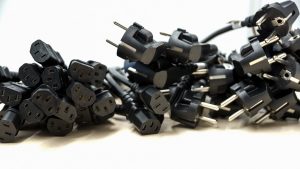
4 Tips for Picking Numbers
Here are four tips for picking numbers effectively and avoiding common traps in both question types:
1. Make sure that the number you pick meets all of the conditions in the question.
Note that some of the conditions may not be stated in their “official” terms, so you’ll have to read into the given information to recognize the rules at play. For example, a question stem might tell you that a given number y “has only two factors.” This means that y has to be a prime number. This is yet another example of how the math itself isn’t all that hard on the GMAT—what’s hard is uncovering the buried information that the question stem is masking by putting it in unusual words.
2. Be careful to avoid making assumptions beyond the given conditions.
For example, if your question states that $a$, $b$, and $c$ are consecutive numbers, you can’t then assume that $a$<$b$<$c$ or that $a$>$b$>$c$. All you know is that they are consecutive—you don’t know the exact order in which they each occur.
Another example is if the question states that $x$ > 5. Many would assume that the number has to be 6 or higher. But unless it is stated that $x$ must be an integer or a whole number, then we can’t make this assumption, as there are an infinite number of decimal values between 5 and 6.
Assuming that the answer is a whole number without being told is a mistake people make all the time on the GMAT.
3. Avoid a number that represents a possible exception to the general rules of a condition.
For example, 2 is the only even prime number and can lead to some confounding results when worked with in an equation, so you may not want to choose it as your “plug-able” number in a prime numbers question.
4. Plug in numbers that are easy to work with.
Don’t use a crazy number like 367—the whole point is to make the problem simpler! As long as they meet all the rules of the conditions given (and don’t have their own confounding special properties), simple numbers like 3, 4, 5, etc. should be fine.

GMAT Data Sufficiency Tricks
Data sufficiency questions are tough for everyone at first, since they’re stylistically different from the math problems you’re used to doing. Once you get used to them, however, you can discern some tricks and shortcuts that are baked into the unique format of these peculiar questions. Below are the best GMAT data sufficiency tricks.
#1: Work Methodically Through the Choices
With their unchanging list of answer options, data sufficiency questions lend themselves perfectly to a special kind of process of elimination: You should always work through the answer choices in the same order.
We’ve pasted the choices below for your review. As soon as possible, you should memorize these answer choices until you know them cold—this will save you a good deal of time on the test. Note that they won’t come with A-E lettering on the real thing (we’ve put that in to make referring to them easier); instead, they’ll each have a bubble to the left that you’ll click on to indicate the answer.
A. Statement (1) ALONE is sufficient, but statement (2) alone is not sufficient to answer the question asked.
B. Statement (2) ALONE is sufficient, but statement (1) alone is not sufficient to answer the question asked.
C. BOTH statements (1) and (2) TOGETHER are sufficient to answer the question asked, but NEITHER statement ALONE is sufficient to answer the question asked.
D. EACH statement ALONE is sufficient to answer the question asked.
E. Statements (1) and (2) TOGETHER are NOT sufficient to answer the question asked, and additional data specific to the problem are needed.
First: test statement 1. If it isn’t sufficient to find one and only one answer, then eliminate (A) and (D). If it is sufficient, eliminate (B), (C), and (E).
Next, test statement 2. If it isn’t sufficient and statement 1 was sufficient, then (A) is the answer. If it is sufficient and statement 1 was also sufficient, then (D) is the answer. If it is sufficient and statement 1 wasn’t sufficient, then (B) is the answer.
If it isn’t sufficient and statement 1 also wasn’t sufficient, then either (E) or (C) is the answer.
You should only put the statements together if, after testing each statement for sufficiency by itself and going through the process of elimination above, both statements are insufficient and you’re left with (E) and (C). At this point, there are only two options: either they’re sufficient when taken together, or they’re not. If putting them together gets to only one answer, then (C) is the answer. If not, then (E) is the answer.

#2: You Don’t Always Have to Solve Questions All the Way
Very often, you don’t necessarily have to determine the value of the expression in the data sufficiency question prompt or in the statements: Your task is simply to determine if the information provided is each statement is enough to do so.
For example, let’s say you get the DS question stem: “What is the value of $x$?” (This is a fairly common type of DS stem.) And let’s say you’re given the following in statement 1:
Statement 1: 22$x$ + 251 = 550
Being the studious person that you are, you might be tempted to solve for $x$ in statement 1 by subtracting 251 from both sides, and then solving for $x$ by dividing by 22 (which is tricky, since it doesn’t result in a whole number). But you don’t actually need to solve for $x$ : Just by looking at the equation, you know that statement 1 can lead to only one possible value for $x$, so it is sufficient to determine the value of $x$, as asked.
Already, you can eliminate (B), (C), and (E)—and you didn’t even need to “do” any math!

#3: Use the “$n$ Variables, $n$ Equations” Rule
Data sufficiency questions that ask you to solve for one variable often feature two variables (usually $x$ and $y$) in the statements. Remember the “$n$ variables, $n$ equations” rule of linear equations for these questions: you need $n$ distinct equations to solve for $n$ variables; thus to solve for $x$ and $y$, you need two distinct equations that include both $x$ and $y$.
This means that statement 1 alone is usually not sufficient, so you can eliminate (A) and (D) after a quick glance to make sure that’s true. However, don’t just pick (C) and move on: You must simplify each equation to double-check that one isn’t the same as the other.
Here’s a brief example:
What is the value of $x$? Statement 1: 8$y$ = 12 – 4$x$ Statement 2: 2$x$ + 4$y$ = 6
Both of these equations are the same, so you can’t solve for one variable by plugging in its equivalent expression of the other:
$x$ + 2$y$ = 3 $x$ = (3 – 2$y$) 2(3 – 2$y$) + 4$y$ = 6 6 – 4$y$ + 4$y$ = 6 6 = 6 $y$ = ?
As long as there are two distinct equations with $x$ and $y$ (and there are no squared variables, which we’ll get into below), then both statements together should be sufficient
#4: Avoid the Square Root Trap
If $x$ 2 is any positive number, then $x$ could be a positive number or a negative number, as a negative times a negative results in a positive as well. This means that there are two possible values for $x$, one negative and one positive. Assuming that “$x$ 2 = [any positive number]” provides sufficiency to get to one value of $x$ is a very common mistake, but it’s easy to avoid by simply remembering this rule!

GMAT Problem Solving Tricks
GMAT problem solving questions are often thornier than they appear. Below are the best GMAT math trick, tips and shortcuts to help you strategically approach even the toughest problem solving questions.
#1: Look at All the Answer Choices Before Solving
This is generally a better strategy than to solve the problem right away and then look for a choice that matches your solution, as the choices themselves can provide clues to how to solve the problem—especially if there’s a property or shortcut that can help you do so. As always, the GMAT almost never requires you to do extremely laborious equations out by hand—they want to see that you can get to the right answer efficiently (as an excellent business person would)!
#2: Estimate to Cross off Wildly Wrong Answers
On a related note, many problem-solving questions test your ability to approximate reasonably, rather than precisely solving a complicated equation.
For example, let’s say you have to multiply a given number by a strange fraction, such a 11/53. This is fairly close to ⅕, or .2. The GMAT wants you to get to the right answer efficiently: they don’t want you to do all the work of dividing the given number by 53 and then multiplying by 11 on your scratchpad. It’s highly likely that the wrong answer choices will be far away from about ⅕ of the number, with only one choice that’s even in the ballpark.
Alternatively, you may get a question that appears to ask you to multiply many large numbers together, but the answer choices are all in exponent form and are all an order of magnitude away. In this case, you might be able to just estimate and find the closest answer as well.
Here’s an example of a good problem solving question to use estimation on:
James Woods High School’s senior class has 160 boys and 200 girls. If 75% of the boys and 84% of the girls plan to attend beauty school, what percentage of the total class plan to attend beauty school?
The first thing to note is that 84% is an unwieldy number. When you see figures like that, it’s a sign that you may want to look for an estimating shortcut.
So what can we eyeball? Since there are 20% more girls than boys, we know that the weighted average will be closer to the girls’ percent than the boys’ percent . So we should look at the answer choices to see what we can already get rid of. We can easily eliminate A, since 75% is going to be too low to be the weighted average. We can also cross out D and E, since they will both be too high (and are essentially equal).
79.5%, as the unweighted average of 75% and 84%, is the low extreme—the right answer will be slightly higher than that when adjusted for the total number of boys and girls, but just by a little bit, since there’s not a drastic difference in number between the two groups. So C, at 80%, looks right just by estimating. C is in fact the correct answer.

#3: Backsolve
Rather than plugging in numbers of your own choosing, some problem solving questions can be solved by working backward: plug the answer choices in, do the equation(s) with them, and cross off the choices that don’t balance. Usually there’s a faster way to get to the right answer, but this method can be a lifesaver when you really just don’t know how else to solve a given question.
The best way to approach backsolving is to start with C: the value that’s in the middle of all the choices . This way, even if it doesn’t balance the equation, you can determine whether the number that will work will be higher or lower (and rule out the higher or lower answer choices accordingly).
Here’s an example of a problem solving question that lends itself to backsolving:
What is the smallest positive integer $x$ for which $x$ 3 + 5$x$ is more than 80?
A. 2 B. 3 C. 4 D. 5 E. 6
As always when backsolving, start with C, $x$ = 4.
$$4^3 + 5(4) = 64 + 20 = 84$$
This is just over 80, so C could be the answer and, even if not, we can already eliminate D and E. Our powers of estimation tell us that 2 (A) is definitely going to yield a result far below 80, so let’s just check that 3 (B) doesn’t work:
$$3^3 + 5(3) = 27 + 15 = 42$$
That’s below 80, so $x$ = 4 is the smallest possible integer that satisfies the condition and C is the answer.

In Conclusion: Summary of GMAT Math Tricks
Simplify unwieldy calculations with the distributive property and other other tricks that allow you to do basic arithmetic with easy numbers like 10. Plugging in numbers is a great strategy for when you can’t think of another way to solve the equation , but be careful with the numbers that you choose. Plugging in numbers works best to prove insufficiency for data sufficiency questions, but it may make more sense to backsolve for problem solving questions.
You can “game” data sufficiency questions by working methodically through the answer choices , and remember that you don’t always have to solve or “do out” a complex equation to prove sufficiency. And if you encounter two variables on a data sufficiency problem, you will need two equations to solve for both of them.
Avoid traps by remember that positive squares can have positive or negative square roots, and by not presuming a number is an integer unless told.
For problem solving questions, look at the answer choices before solving the problem. Once you’ve identified what the question is asking of you, estimate to cross off answers that can’t possibly work . Sometimes estimating will get you all the way to the right answer. Finally, don’t be afraid to backsolve —but always start with C , or the middle value, when doing so.
What’s Next?
Check out our guide to 10 tips to master the quant section .
When you’re ready to conquer the subject areas tested, check out our GMAT-specific guides to integer properties , geometry formulas , and rate problems .
If you need help getting started and developing a study plan, we’ve got you covered there too .
Happy prepping!
Was this helpful? Sign up for FREE GMAT and MBA guides!
Share this:.
- Click to share on Twitter (Opens in new window)
- Click to share on Facebook (Opens in new window)
- Click to share on Google+ (Opens in new window)
Author: Jess Hendel
Jess Hendel is a Brooklyn-based academic advisor, test prep tutor, and content writer for PrepScholar. A graduate of Amherst College, she has several years of experience writing content and designing curricula for the top e-learning organizations. She is passionate about leveraging new media and technology to help students around the world achieve their potential. View all posts by Jess Hendel

GMAT Problem Solving—Be Flexible in Your Approach (and Know What You Need to Know)!
- Share on Facebook
- Share on Twitter
- Share on LinkedIn
- Share on WhatsApp
- Share on Reddit
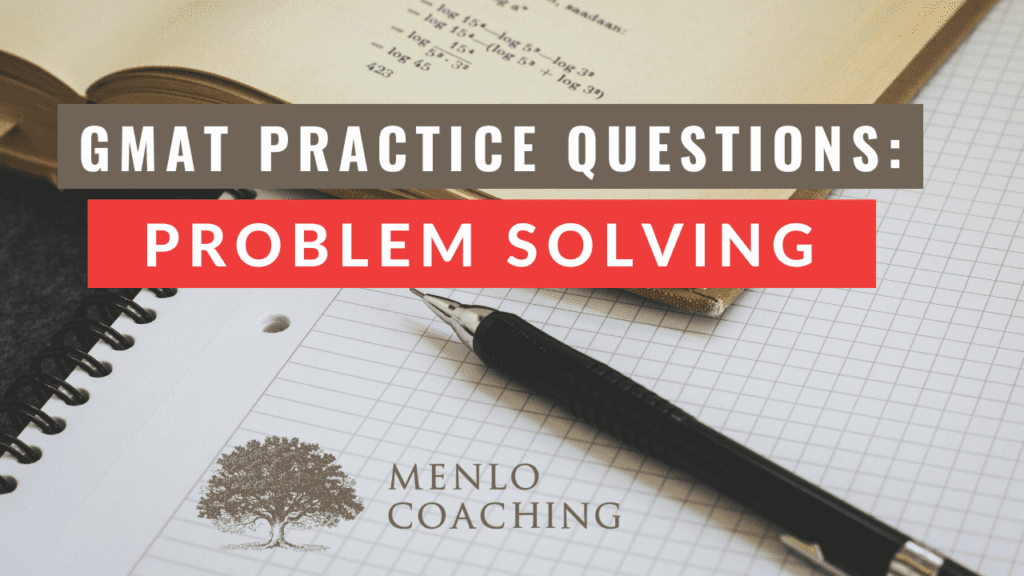
Probably the most common misconception about the GMAT is that the quant section is a “math test.” Obviously, math skills are essential to success and your fluency with underlying math concepts directly affects your score. However, the problems in the quant section are testing much more than math:
- Who is good at creative problem solving?
- Who can deal with abstract presentation of simple concepts?
- Who leverages every resource and hint in a problem?
- Who reads carefully and follows instructions properly?
Of all the question types on the GMAT, test prep companies feel most comfortable creating unofficial quant problems. They hire math whizzes to crank out content questions and consumers gobble them up in their preparation for this section.
While these questions will help with content improvement, they usually lack the type of difficulty you see in a full 75% of the quant questions on the GMAT! By using mainly official Problem Solving questions, you not only improve your understanding of underlying content but also prepare yourself for the other types of difficulty that plague a majority of students on hard quant questions.
Best Practices for GMAT Problem Solving Questions
On the quant section of the GMAT, it is helpful to think of Problem Solving questions in two categories:
Type 1 : These questions are more just math questions and require you to apply conceptual knowledge and practical math approaches to solve a question.
Type 2 : These questions are made difficult by abstract presentation, complex or tricky wording, red herrings, your choice of approach—i.e. those in which just understanding the math will not get you to the correct answer efficiently (if at all!).
Type 2 questions have always been the mainstay of the quant section on the GMAT, and these questions are what make the test so hard for students. To explain this type of question, I have always used this example: on the exam, GMAT test writers turn 1 + 1 into a 90 th percentile problem by making it exceptionally hard to sort through all the garbage and see that you just need to do a simple addition. When you miss this question, you don’t need to go do more addition drills, you need to learn how to sort through abstract presentation and deal with complex wording! People do not spend enough time improving these types of skills that are so essential on hard official quant questions.
In the shift to the GMAT Focus exam, I expected to see even fewer Type 1 questions but so far this has NOT been the case. Anecdotally, I would say that ¼ of the questions fall into category 1 and ¾ fall into category 2 on the new exam, the same proportion as on the legacy version of the GMAT.
This is still a small percentage of the quant questions overall, but you should think of these Type 1 questions as gifts on the GMAT quant section: if you do the proper prep and understand the math, you will get these questions correct with little effort. It is also important to note that the standard for solving pure math questions around the globe is very high. If it is mostly just a math question, you really need to get it right to be competitive on the GMAT quant section.
So, when I review missed questions with students and I see that they are missing a Type 1 question, I say: “Know What you Need to Know! and this question would feel easy.” There is no better example of this than the first question covered in this section, a question I see far too many students miss.
GMAT Problem Solving: Example Question #1
Detailed Explanation For Question 1
This process is made more difficult in this official question with two mechanisms:
- The denominator does not just contain individual terms with roots but also integers or multiple roots added together. This makes for a more difficult version of rationalizing the denominator in which you must recognize the difference of squares and” multiply by one” using the conjugate of the denominator. Even though this is harder, these are both core best practices that you learned in algebra in high school and that you must know for the GMAT. This skill has been tested so many times on the GMAT that you should recognize two things immediately: you should use the conjugate and the denominators will simply disappear with the numbers they have used.
- Three terms with roots in the denominator are being added together, so the test-maker entices students to try to find a common denominator or take some other incorrect approach.
The important point with a manipulation like this is that you simply must recognize what to do! We cover these types of important math skills in detail in our Refresh Modules and then you need to practice them with questions like this. Once you see what to do on the first term, then just do the same type of manipulation on each fraction individually and add the simplified terms together.
With each of the three fractions simplified and the denominators disappearing, you are simply adding together the following three terms:
The correct Answer is thus (E).
While these three steps look tedious on paper, the reality is that a lot of people taking the GMAT are going immediately to the last step shown above without any written work. You want to be one of those people!
If you don’t know what to do on this problem algebraically (and the point of this example is that you should!), it is important to note that this question can also be solved cleverly using answer choices and simply estimating the roots. Since the first four answer choices are all less than 1/2, you know the answer must be (E). Estimating the two roots in the question stem allows you to see that the sum of the three expressions will get close to 1, and none of the other answers are close. If you solved this question with this technique, good for you! However, this question could easily contain 6/7 as an answer, and then you would be in trouble.
As you prepare for the exam, pay special attention to any misses on questions like this that just require math knowledge. They are easier to prepare for and it is important that you get them right. With difficult abstract problems involving lots of red herrings or tricky wording, you simply can’t get win them all, but for these types of questions, you can develop complete mastery.

GMAT Problem Solving: Example Question #2
One year ago, a window washing service charged $100 for setup and an additional $30 per hour for on-site washing. This year the company charges $20 for setup and an additional $50 per hour for on-site washing. Which of the following is equivalent to the percentage change from last year to this year that the company charges for setup and x hours of on-site washing?
Detailed Explanation For Question 2
This example is a classic type 2 question—it feels abstract and you must read carefully. You can be comfortable with most percent questions on the GMAT and still get this wrong (or waste a lot of time) if you don’t choose the right approach.
If you search the internet for explanations on this question, you see everyone explaining one tedious algebra step after another AND you see many people who have either botched that algebra or made a mistake setting up the percent change. In 20 years of preparing people for the test, I have only seen a few variable-in-answer choice percent questions for which algebra was a better approach than number picking. Here the algebra is not as tedious as in other questions of this kind, but number picking is unquestionably easier.
As a best practice for the exam, always take a little time to decide on your approach (algebra, conceptual thinking, backsolving, or number picking) before jumping into a question. Don’t swim upstream with a long math approach when you can take advantage of answers or use your own numbers. As we teach in our curriculum, whenever you see percent change questions with variables, try number picking first and only go to algebra if that is not working. When number picking, it is important that you are careful with the number(s) that you choose for variables—that is, anticipate and use numbers that will make solving the question as easy as possible. On harder number picking questions, you may choose the wrong numbers first and only realize which ones will work better as you move into the question.
The final step after you solve with the number(s) you have chosen is to plug that number into each answer, looking for your solution, in this case 8%. By plugging 5 into each answer, it is clear that (D) and (E) are wrong as they would be negative. (A) is way too big and (C) would leave 27 in the denominator (i.e. not reduce to 8) so the correct answer must be (B).
Thinking about this question broadly, it is really quite simple with number picking as long as you pick a good number!!!! One risk in number picking is that you get buried in awkward calculations. Imagine if you picked say 3 or 7 for x. With 3, you would be starting at $190 and calculating the % change to $170. Ugly. With 7 it would be $310 to $370. Also, ugly.
Number picking is an essential strategy for GMAT word problems with variables in answers and for many other question types (percent questions or others in which the starting number can be anything). You must practice and hone this strategy in the same way that you do with certain quant skills and calculations, but most people are not doing that in their preparation. As you move through official questions, take the time to consider alternative approaches after you have solved a question, particularly if your method seemed tedious or time-consuming. As a final exercise, think about how easy you can make a problem like this compared to how it first seems: if I asked you what the percent change was from 250 to 270, I am confident that all of you could get it correct in less than a minute!
Caution: Avoid Unofficial GMAT Problem Solving Questions (except when you need content help)
Utilizing unofficial Problem Solving questions is not as worrisome as using unofficial Verbal or Data Insights questions, which can actively hurt your score. Since most unofficial Problem Solving questions are more just about the math, they can help improve your mastery of underlying math content.
With that being said, you better move to official questions early in your preparation once your content knowledge is solid. Without using the complex and cleverly made official quant questions, you are not preparing for the more complicated problems in which you must sort through clever wording, use answer choices actively, number pick to simplify the problem, etc. People with strong quant skills (engineers, math majors, etc.) are often surprised that their quant scores are not higher, and it is often because they are not prepared for this “Type 2” difficulty that appears in a majority of quant questions on the GMAT.
To strengthen your skills and tackle these “Type 2” difficulty questions with confidence, consider joining our live GMAT prep course . These sessions are designed to guide you through the complexities of official quant questions in a supportive, interactive environment.

- Stay Informed. Sign Up! Login Logout Search for:
- What Matters? And What More? 50 Successful Essays To The GSB & HBS
- Specialized Masters Program Directory Business Analytics Hub MBA Admissions Consultant Directory Online MBA Hub Home Assess My MBA Odds
- 2024 MBA To Watch: Viswanath Ramaswamy, IIM Ahmedabad (11,356 views)
- Forbes: World’s Best Management Consulting Firms (8,537 views)
- 2024 MBA To Watch: Ambika Nautiyal, IIM Ahmedabad (8,232 views)
- MBAs To Watch: Class Of 2024 (7,833 views)
- U.S. Employers Expect To Hire Dramatically Fewer International B-School Grads: Report (5,815 views)

Our Partner Sites: Poets&Quants for Execs | Poets&Quants for Undergrads | Tipping the Scales | We See Genius
How to Solve Problem-Solving Questions in the GMAT Quantitative Section
Learn how to tackle problem-solving questions in the GMAT Quantitative section with ease.
Posted May 24, 2023

Featuring Jennifer P.
Cool, Calm, and Laser-Focused: Tame GMAT Test Anxiety
Starting thursday, september 12.
4:00 PM UTC · 60 minutes
Table of Contents
If you are planning to take the GMAT, then you are likely aware of the difficulty that comes with the Quantitative Section. This section assesses your math skills and your ability to apply them to real-life business scenarios. One of the question types that test takers encounter in GMAT Quantitative Section is the Problem-Solving question. In this article, we will be discussing ways of solving problem-solving questions in the GMAT Quantitative section.
Understanding the Structure of GMAT Quantitative Section
Before we dive into solving problem-solving questions, let's have a quick overview of the GMAT Quantitative section's structure. You will have 62 minutes to answer 31 multiple-choice questions. The questions are divided into two categories: Problem-Solving and Data Sufficiency. The Problem-Solving questions present a real-life scenario and ask you to solve a problem using your math skills.
The Data Sufficiency questions, on the other hand, present a scenario and ask you to determine whether the given information is sufficient to answer the question or not. These questions are designed to test your ability to analyze and interpret data, rather than just solving problems. It is important to note that both types of questions carry equal weightage in the GMAT Quantitative section, so it is essential to prepare for both types of questions equally.
Tips and Tricks for Tackling GMAT Quantitative Questions
One of the keys to success in the GMAT Quantitative section is to have a solid understanding of the math concepts tested on the exam. This includes integers, algebra, geometry, probability, and statistics. You can find a comprehensive list of concepts tested in this section in the GMAT Official Guide. Additionally, it's essential to practice solving questions, so you get comfortable using the concepts in a timed setting.
Another important tip for tackling GMAT Quantitative questions is to read the questions carefully and identify what is being asked. Many questions are designed to test your ability to interpret data and apply mathematical concepts to real-world scenarios. Therefore, it's crucial to understand the context of the question and identify the relevant information before attempting to solve it.
Finally, it's essential to manage your time effectively during the GMAT Quantitative section. The section consists of 31 multiple-choice questions that you must complete in 62 minutes. This means you have an average of two minutes per question. Therefore, it's crucial to pace yourself and not spend too much time on any one question. If you're unsure about a question, make an educated guess and move on to the next one. You can always come back to it later if you have time.
Identifying Common Mistakes in GMAT Quantitative Section
One common mistake test-takers make is to overcomplicate the questions given poor time management skills. The GMAT does not test complex math concepts, but rather it checks if you can apply simple math skills to solve business problems. Another mistake that GMAT test-takers make is to rush through the questions. You should avoid this mistake by reading the question carefully and understanding what is being asked before rushing to answer.
Another common mistake that GMAT test-takers make is to rely too heavily on calculators. While calculators are allowed on the GMAT, they should only be used for basic calculations. Relying too much on calculators can slow you down and lead to errors. It is important to practice mental math skills to improve your speed and accuracy.
Additionally, some test-takers make the mistake of not reviewing their work. It is important to double-check your answers and make sure you have not made any careless mistakes. This can be done by going back through the questions and checking your calculations or by plugging your answer back into the original problem to ensure it is correct.
Developing a Strategy for Solving Problem-Solving Questions in GMAT
Developing a strategy for solving problem-solving questions is crucial to perform well in the GMAT Quantitative section. A good strategy includes identifying the question type, breaking down the question into steps, and using the process of elimination to arrive at the correct answer. Additionally, an efficient approach entails solving the easier questions first and allocating more time to challenging questions.
Another important aspect of developing a strategy for solving problem-solving questions in GMAT is to practice regularly. Practicing regularly helps in identifying the areas where you need improvement and also helps in building speed and accuracy. It is recommended to solve a variety of questions from different sources to get a better understanding of the question types and to be prepared for any surprises on the test day. Moreover, taking timed practice tests can help in simulating the actual test environment and in managing time effectively during the test.
Importance of Time Management in GMAT Quantitative Section
Effective time management in the GMAT Quantitative section is necessary as you have 62 minutes to answer 31 questions. Ensure that you allocate more time to the challenging questions and leave the easy ones for the last. If a question seems too time-consuming, skip it and come back to it later. Remember, a wrong answer costs you more points than leaving a question unanswered.
Another important aspect of time management in the GMAT Quantitative section is to practice with timed mock tests. This will help you get accustomed to the time pressure and develop a strategy to tackle the questions within the given time frame. Additionally, it is essential to stay calm and composed during the exam and not panic if you feel you are running out of time. This can lead to mistakes and negatively impact your score.
Furthermore, time management is not just about answering questions quickly but also about using your time efficiently. Make sure to read the questions carefully and understand what is being asked before attempting to solve them. This will help you avoid making careless mistakes and save time in the long run. Also, avoid spending too much time on one question and move on to the next if you are unsure about the answer.
Enhancing Problem-Solving Skills through Practice Tests
The best way to increase your problem-solving skills in the GMAT Quantitative section is through practice tests. There are several GMAT practice tests and prep materials available online that you can use to simulate the actual test experience. Practice tests also give you an idea of your strengths and weaknesses, allowing you to work on areas that need improvement.
Utilizing Online Resources to Ace GMAT Quantitative Questions
Online resources are an excellent way to supplement your GMAT preparation. You can find several websites, blogs, and forums that provide tips and tricks for solving GMAT Quantitative questions. Also, there are online calculators that can help speed up your calculations, allowing you to solve the problems even faster.
Improving Speed and Accuracy in Solving GMAT Quantitative Questions
In GMAT Quantitative, it's essential to strike a balance between speed and accuracy. To improve your speed, practice solving questions under timed conditions. To increase accuracy, review your answers and look for consistent mistakes. Additionally, you should eliminate common answer choices like zero, one, negative numbers, and decimals since they are often incorrect.
Analyzing and Interpreting Data in GMAT Quantitative Section
Problem-Solving questions in the GMAT Quantitative section often require you to analyze and interpret data. It's essential to read the question carefully and understand what is being asked. If there is a graph or chart that accompanies the question, study it and use it to arrive at the correct answer.
Understanding the Different Question Types in GMAT Quantitative
There are different types of questions in the GMAT Quantitative section, ranging from arithmetic to statistics. You should familiarize yourself with the different types of questions and learn the best approach to solving them. This way, you will know what to expect on test day and be adequately prepared.
Effective Approaches for Solving Challenging GMAT Quantitative Questions
Sometimes, you will encounter challenging questions that require more time and effort to solve. In such cases, breaking down the problem into smaller steps can be helpful. Also, consider using the process of elimination, and look for patterns or shortcuts that can speed up your calculations.
Importance of Confidence and Calmness During the Exam
Finally, it's crucial to stay calm and confident during the exam. Remember that the GMAT tests your ability to apply basic math skills to solve business problems. Trust your preparation and take the time to read and understand the questions before answering. If you encounter challenging questions, take a deep breath and move on to the next question.
Reviewing the Basics: Essential Math Concepts for the GMAT Quantitative Section
It's essential to review the basics of math concepts tested on the GMAT Quantitative section. These include integers, algebra, geometry, probability, and statistics. Understanding the fundamental concepts and their application in real-life situations can help you solve the questions faster and with more accuracy.
Tips for Overcoming Anxiety and Stress During the Exam
Lastly, test anxiety is a common problem that many test-takers face. To overcome anxiety, ensure that you get adequate sleep and rest before the test day. Take deep breaths to calm your nerves and avoid rushing through the questions. Remember, the GMAT is just one part of the overall evaluation process. Determine your desired score and approach the exam with a positive and confident mindset.
In conclusion, solving problem-solving questions in the GMAT Quantitative section requires practice, strategy, and time management. Utilize online resources, practice tests, and review the basics of math concepts tested on the exam. With the right preparation, mindset, and confidence, you can ace the GMAT Quantitative section and achieve your desired score.
Browse hundreds of expert coaches
Leland coaches have helped thousands of people achieve their goals. A dedicated mentor can make all the difference.
Browse Related Articles

May 24, 2023
How to Solve Data Sufficiency Questions in the GMAT Quantitative Section
Are you struggling with data sufficiency questions in the GMAT quantitative section? Look no further! Our comprehensive guide provides step-by-step strategies and tips to help you solve these tricky problems with ease.

July 9, 2024
The MBA Application Timeline—With Chart
Applying to top MBA programs? We've put together a comprehensive MBA application timeline to help you hit all your deadlines—along with a helpful chart.

January 24, 2024
Average GMAT Scores by Business School
Discover the average GMAT scores required for admission to top business schools.

August 20, 2024
The Ultimate MBA Application Guide (2024)
A step-by-step guide for every part of the MBA application, with tips and tricks from experts, additional free resources, essay and resume examples, and more.

How to Solve Critical Reasoning Questions in the GMAT Verbal Section
Learn how to tackle critical reasoning questions in the GMAT verbal section with our expert tips and strategies.

How to Solve Graphics Interpretation Questions in the GMAT Integrated Reasoning Section
Learn how to tackle Graphics Interpretation questions in the GMAT Integrated Reasoning section with our comprehensive guide.

How to Solve Table Analysis Questions in the GMAT Integrated Reasoning Section
Learn how to tackle table analysis questions in the GMAT Integrated Reasoning section with our comprehensive guide.

How to Solve Two-Part Analysis Questions in the GMAT Integrated Reasoning Section
Learn how to tackle two-part analysis questions in the GMAT Integrated Reasoning section with our comprehensive guide.
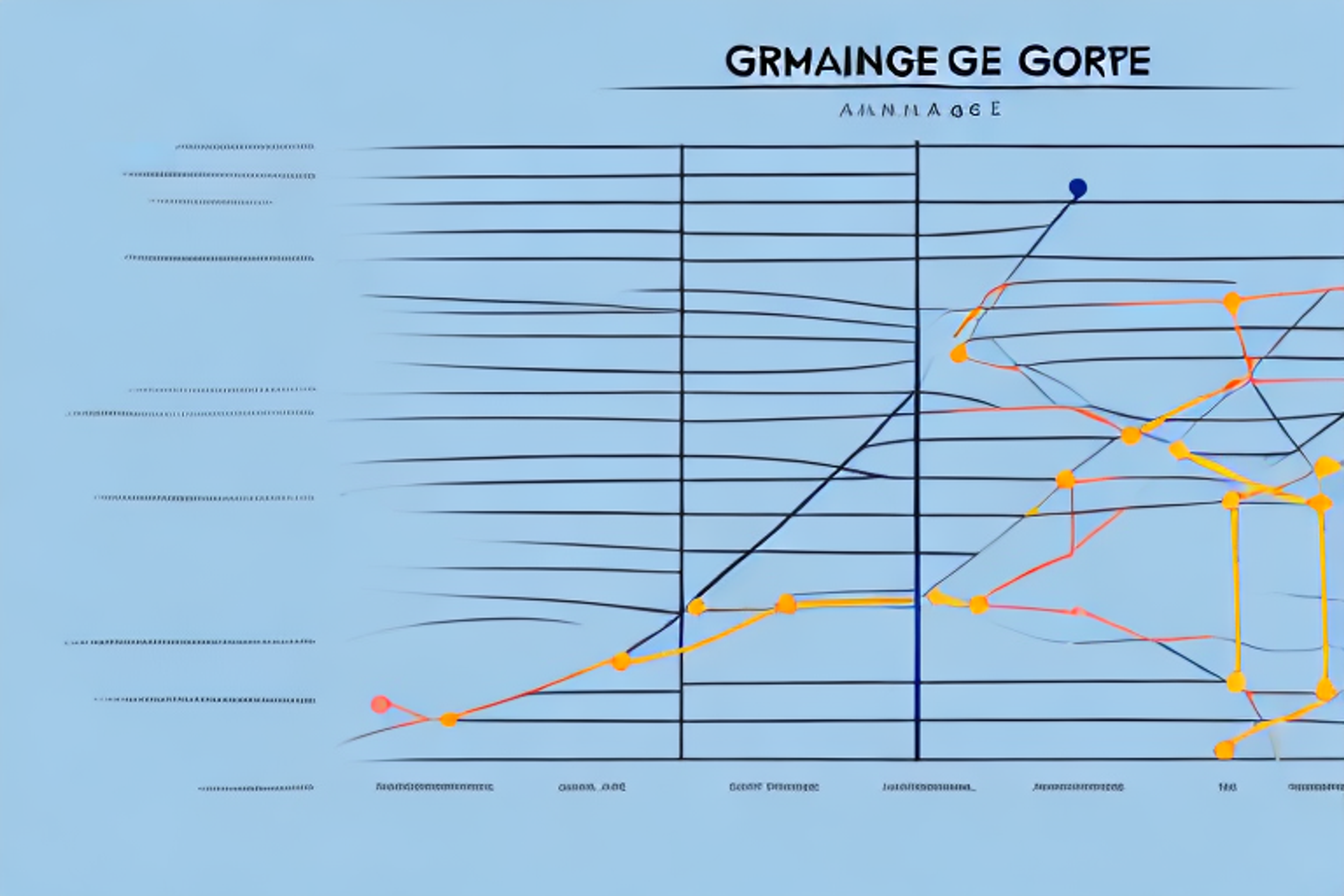
The GMAT Score Range: Test Results and Rankings
Discover the ins and outs of the GMAT score range and how it affects your test results and rankings.
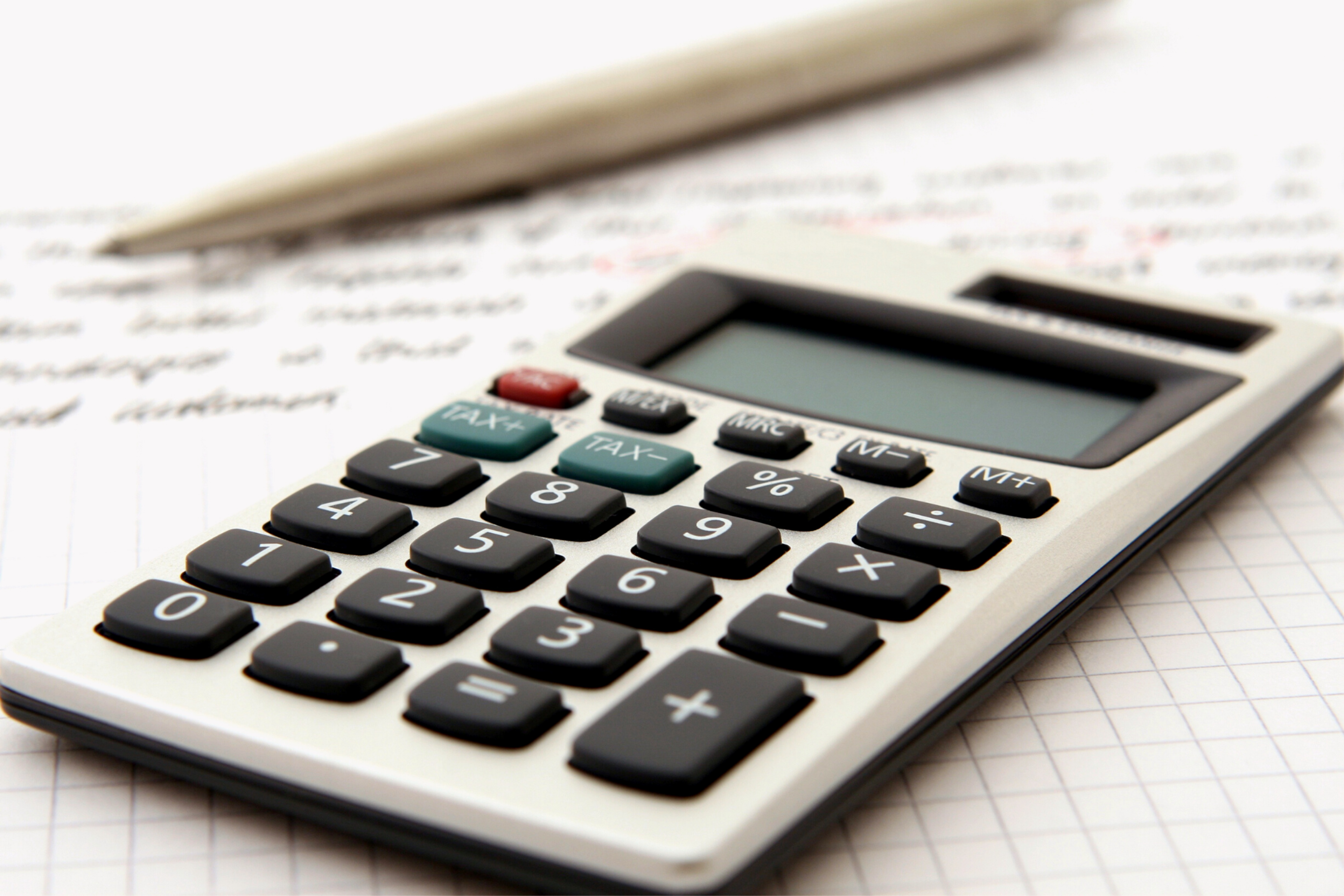
Calculators on the GMAT/GRE: When You Can Use Them
Discover the ins and outs of using calculators on the GMAT/GRE with our comprehensive guide.

Decoding the GMAT: Essential Tips for First-Time Test Takers
If you're a first-time GMAT test taker, this article is a must-read! Discover essential tips and strategies to help you decode the GMAT and ace the exam.

August 15, 2024
GMAT vs. GRE for an MBA—Which Should You Take (and How to Ace Both)
Applying to top MBA programs? Click here to determine if the GMAT or GRE is better for you—along with tips and tricks to ace both tests. Includes a comprehensive overview of both tests (the GMAT Focus and new, shorter GRE), test tips, section breakdowns, and more.
- +91 630 323 9042
- support@gmatpoint.com
GMAT Point by Cracku
Smarter way to prepare
GMAT Problem Solving Questions With Answers
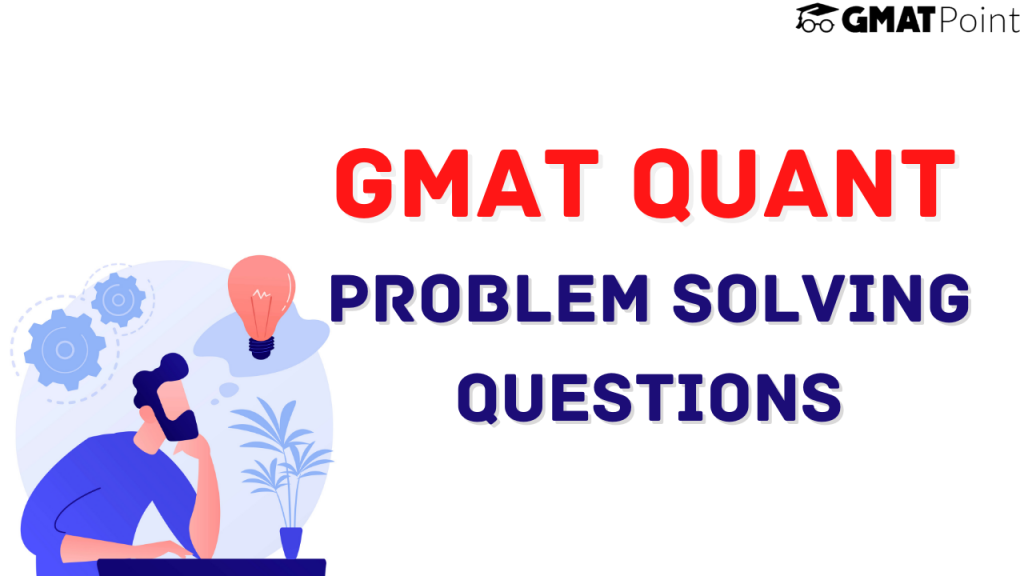
Problem Solving questions constitute a major chunk of the Quant section of the GMAT. Of the 31 questions that appear in this section, you can expect close to 50% of the questions from problem-solving. In this article, we will be looking into –
What are GMAT Quant Problem Solving Questions?
- 3 examples of GMAT Problem Solving Practice Questions
- 5 tips that can help you ace these questions.
Subscribe To GMAT Preparation Channel
Take Free GMAT Daily Targets
Problem Solving or PS questions are questions that have a question followed by five options. They are very similar to any MCQ question that we come across in our school or university examinations. You need to solve the question and arrive at the answer and mark the correct choice.
There is only one correct answer in Problem Solving Questions.
Problem Solving questions are considered easier than Data Sufficiency questions because they are straightforward. Having said that, a preparation without a proper plan might prove disastrous for these questions.
Let us now take a look at a few Problem-Solving questions to get you started.
Examples – GMAT Problem Solving Questions
Question 1:.
If a regular unbiased die is rolled twice, what is the probability of getting a sum greater than 10 in the two rolls?
In probability, the probability of an event E = The number of favourable outcomes / Total number of outcomes
The first step is to calculate all favourable outcomes.
Let {x,y} represent the two rolls.
For getting a sum greater than 10, we can get a sum of 11 it a sum of 12.
Now, for a sum of 11, we can have these cases – {5,6}, {6,5}
For a sum of 12, we can have these cases – {6,6}
Hence, there are three favourable outcomes.
Total number of outcomes = 6*6 = 36
Hence, probability = 3/36 = 1/12.
Question 2:
The length of the equal sides of an isosceles triangle is 6 cm. What is the maximum possible area of the triangle(in square centimetres)?
Let us assume that one of these 6 cm sides is the base and the angle that the other 6 cm side makes with the base is k degrees.
Now, we know that the area of a triangle whose 2 adjacent sides are known and the enclosed angle is known can be calculated as:
Area = (1/2)*a*b*sin(k)
a = First side
b = Second side
k is the angle enclosed.
Now, a and b are fixed as 6 cm each
If sin k is maximum = 1, the value will be maximum.
Hence, the maximum possible area = (1/2) x 6 x 6 = 18
Question 3:
If a set A has 16 distinct elements all of which are integers and set B necessarily has the square of all elements of set A, what can be the minimum number of elements in set B?
If all 16 elements in A are distinct, say 1, 2, 3, …., 16, then B also has 16 elements 1, 4, 9, ….., 256.
However, to reduce the number of elements of B, we need to have as many elements as possible in A that also has their negative counterpart in A. For example, if 2 is an element, -2 should be an element as well. As a result, if 4 (square of both 2 and -2) is present in B, it will account for 2 elements in A.
Hence, we can have 8 positive numbers in A and their corresponding negative numbers in A. In this way, we can say that B will have a minimum of 8 elements.
Hence, the minimum possible number of elements in B is 8.
Though these examples provide a good sense of what type of GMAT Problem Solving questions you can expect, in no way do they represent the exhaustive list of concepts required for the Quantitative section of GMAT.
Tips to keep in mind:
- Try to take some time out from easy Problem Solving questions so that you can use that time to solve tricky Data Sufficiency questions. Data sufficiency questions usually take more time to solve than Problem Solving questions.
- Do not get stuck in a question for long. If you find yourself trapped in a question for long, take a guess and move on.
- Read the units carefully.
- Look out for negation words. For example: Which of the following are NOT possible values of x?
- Some questions can be solved faster by the use of options. Make sure you don’t solve these questions in a conventional way.
You can check out the Free GMAT Daily Targets on our platform .
Also, check out the Free GMAT Verbal Tests and Quant Tests .
If you are starting your GMAT preparation from scratch, do check out GMATPOINT.
Join GMATPoint Telegram Channel
Hope this article was helpful. Wish you all the best for the GMAT.

Majortests helps you prepare for the GMAT by giving you free practice tests. You don't need to register or create usernames and passwords. Our questions are developed by test prep professionals.
We have hundreds of GMAT practice questions arranged into mini tests, each mini test has a score card at the end. We also give you explanations to the questions you get wrong so that you can learn from your mistakes. Use the menu on the left to get more information about the test sections, or choose a question type and do a test now.
18 practice tests covering sentence correction , critical reasoning and reading comprehension questions.
15 practice tests covering problem solving and data sufficiency questions.
Essay & Integrated Reasoning
Tips and guidelines on how to structure your analysis of an argument essay and an introduction to integrated reasoning questions.
MBA Admissions
Information about MBA admissions, including how to write a good MBA Essay and how to judge MBA Rankings when choosing a B School.
- International Marketing Channels - Orana Case
- Information Gathering
- Explain How and Why Person Centred Values Must Influence All Aspects of Health and Social Care Work.
- Cmit 350 Final Project
- Rtt1 Task 1
- Glg 150 Wk 4 Worksheet 1
- Professional Presence and Influence
- Jackson Automotive Case Study
- Dozier Industries
- The Differences in Competencies Between Nurses Prepared at the Associate-Degree Level Versus the Baccalaureate-Degree Level in Nursing.
- Impact of Iom Report on Nursing Education
- George Herbert Mead and Erving Goffman
- Fsa-Homework5-7
- Community Health & Population Focused Nursing
- Pyramid Door Case Analysis
- Assessing a Company Future Financial Health
- Introduction to Business
- Boston Medical Center
- Ethics in Accountancy Case Analysis
- The Rocking Horse vs Lottery
- Unit Wp2: Word Processing Software
- Juwi Analysis
- Embraer Case
- Discovery Essay
- Wgu- Professional Presence and Influence
- Chase's Strategy of Financing Hong Kong Disney
- 'Welcome to the World of 21st Century Hrm'.
- Northampton Group Inc. – Case Study Analyses: How to Increase Shareholder Value
- Fasb Codifcation
- Role of the Manager Report
- The House of Lords Is Now More Effective Than the House of Commons in Checking Government Power. Discuss
- Sci 220 Food Intake – 3 Days
- Twg Marketing
- Scenario Involving Civil Liability and Civil Action
- Where Sweatshops Are a Dream
- Theological Essay
- Analyse the Factors That Causes Differences in the Hazards Posed by Volcanoes Around the World (40 Marks)
- Wgu Rtt1 Task 2
- Health and Social Care- Case Study- P3/P4/M2/D2
- Psy/315 Week 1 Worksheet
- W5 Benchmark Cwv-101
- A Report of Drug X Transfer
- Ethical Dilemma
- Designing a Managerial Incentives Contract
- Paper Case Study Nantonia
- Diet Analysis
- Childhood Vaccinations
- Sonic 1000 Pda Chapter Assignments
- Law Questions
- Er at Northwest General
- Hongkong Disneyland
- Client Transaction
- Isle Royale
- Dreams: Informative Speech
- Arts 125 Week 5
- Six Debates over Macroeconomic Policy
- Health Organization Case Study: Unitedhealth Group
- Rudy Wong Investment Advisor Case Study
- Swot Analysis of Healthcare Organizations
- GMAT Test Information
- GMAT Test Structure
- GMAT Scores
- GMAT Verbal
- sentence correction
- critical reasoning
- reading comprehension
- problem solving
- data sufficiency
- Integrated Reasoning
- MBA Rankings
* GMAT is a registered trademark of the Graduate Management Admission Council, which was not involved in the production of, and does not endorse, this product.
All content of site and tests copyright © 2024 majortests.com
- Virtual Writing Center
- CA Privacy Policy
GMAT Quant Section Breakdown
| player ready... |
Last Updated on May 15, 2023
If you are new to studying for the GMAT and are already familiar with the overall format and structure of the exam , you may still be wondering what types of questions appear in the Quant section of the GMAT. This article provides a GMAT Quantitative section breakdown and discusses the concepts tested in the Quant section. It also discusses the specific Quant question types you can expect on the exam.
Here are the topics we’ll cover:
The quant section of the gmat, what quant topics does the gmat test, each major math topic has many subtopics.
- Don’t Try to Predict Which GMAT Quant Topics You’ll See
How Target Test Prep Does Topical Learning
The two types of gmat quant questions, problem solving question 1, problem solving question 2, value data sufficiency example, yes/no data sufficiency question example.
- GMAT Quant Summary
How Many Questions Are in the GMAT Quant Section?
How long is the gmat quant section, what are the topics in gmat quant, how hard is the gmat quant section, what’s next.
Let’s first discuss the general format of the Quant section of the GMAT.
The Quant section is just one of four sections on the GMAT : Quant, Verbal, Integrated Reasoning (IR), and the Analytical Writing Assessment (AWA). However, along with the Verbal section, Quant is recognized as one of the more critical sections of the GMAT. For one, Quant and Verbal are the only contributors to the all-important “0 to 800 score.” For another, many business schools place particular weight on the Quant score because it is a reliable predictor of how well you will perform in your business school classes.
The Quant section of the GMAT is one of the most important sections of the GMAT.
The Quant section consists of 31 questions and has a time limit of 62 minutes. Depending on the section order you select on test day, the Quant section can be the first, second, or third section on your GMAT.
Now that we are familiar with the general makeup of the GMAT Quant section, let’s discuss the Quant topics tested on the GMAT.
If you’ve ever spoken with anyone about GMAT Quant, you’ve likely heard that the GMAT tests “high school math.” Thus, regardless of what age you are when you begin your GMAT prep, at some point, you should start to lean on at least some of the things you learned in high school math as a foundation for GMAT Quant.
GMAT Quant comprises many math topics you learned in high school.
The 21 major math topics tested on the GMAT are as follows:
- Basic Arithmetic
- Linear and Quadratic Equations
- Number Properties
- Inequalities
- Absolute Values
- General Word Problems
- Work Problems
- Unit Conversions
- Overlapping Sets
- Combinations and Permutations
- Probability
- Coordinate Geometry
There are 21 major math topics tested on the GMAT.
You may say, wow, there are only 21 major Quant topics on the GMAT. However, that is not the whole story. Every major math topic has many associated subtopics.
For example, let’s look at the Quant topic of rates. Sure, we need to know that rate x time = distance. However, we also have to be familiar with many subtopics of rates. For example, you need to know topics such as average rates, converging rates, diverging rates, catch-up rates, catch-up and pass rates, round trip, etc. Thus, to truly master GMAT Quant, be ready to deal with the hundreds of subtopics that could show up in the GMAT Quant section.
Also, I have some bad news. There is no way to predict the exact Quant concepts you will see on your exam. Let’s discuss that now.
Although there are only 21 major Quant topics, there are hundreds of subtopics that you must learn to master GMAT Quant.
Don’t Try to Predict Which GMAT Quant Topics You’ll See
While we can make some broad generalizations about which GMAT topics are most commonly tested, the GMAT is generally quite unpredictable. Test-takers see a random array of questions. Furthermore, this mix of questions differs from test to test. Also, you can’t assume that what you see on any official practice test will mimic what you see on test day.
If you don’t believe me, let’s use some basic logic. Do you think that the folks at GMAC (the developers of the GMAT) would allow students to study only the six official practice exams to determine what Quant topics will appear on test day? That scenario is quite unlikely, unless the plan is to have all test-takers knock the GMAT out of the park.
The test-makers know that part of the GMAT’s difficulty is that there are so few questions on the test, but those questions can span hundreds of topics. In other words, part of the test’s difficulty rests on the fact that we cannot accurately forecast what we will see from one GMAT to the next .
It’s impossible to predict the exact topics that will be covered on any given GMAT.
So, the conclusion is that all Quant topics are essential. In other words, don’t base what you study on the volume of specific topics in your practice exams or a past GMAT exam you took.
With that point in mind, let’s discuss the best way to study GMAT Quant.
The Best Way to Study GMAT Quant
We’ve established that you must learn a great number of concepts to succeed on GMAT Quant. A great way to learn so many concepts is to take a topical approach to your prep. Topical learning consists of learning just one topic at a time, and then practicing only that topic until you have achieved mastery.
If you use this topic-by-topic, linear approach to GMAT preparation, you’ll be employing the most effective strategy to guarantee that you fully comprehend each GMAT Quant topic. As a result, you won’t waste time attempting to understand complex topics before you fully grasp the fundamentals.
For example, do you think it would be helpful to jump from quadratic questions to ratio questions to geometry questions before fully grasping any of those topics? I think we can all agree that the answer is no.
If you randomly jump from topic to topic and do not give each topic the care and attention it deserves, it will be nearly impossible to develop your GMAT Quant skills. Rather than moving forward through your prep, you’ll just be treading water.
Topical learning allows you to learn each GMAT topic individually before progressing to the next.
To get a better idea of how topical learning works, let’s take a closer look at the TTP study plan.
At TTP, the foundation of our study plan is topical learning and practice. We ensure that students focus on just one Quant or Verbal topic at a time. Only once they master a topic do they move on to a new topic.
For example, mission 4 of the TTP study plan contains the Quant chapter on quadratic equations. So, the first task of any student who reaches mission 4 is to learn about linear and quadratic equations. They learn about single variable equations, equations with two or more variables, the substitution method of solving linear equations, factoring quadratic equations, foiling quadratic equations, the zero product property, quadratic identities, the difference of squares, factoring by grouping, etc.
Each subtopic makes up a lesson, and within each lesson, we present two to four example questions testing that specific concept. So, if you just learned about quadratic identities, for example, you would practice up to four example questions just on quadratic identities.
Also, after a chapter has been completed, several easy, medium, and hard chapter tests are presented. They test the student on the concepts just learned. A detailed summary of strengths and weaknesses is provided after each test.
While the TTP method of topical learning is just one example, it should give you a good picture of how to study GMAT Quant effectively.
A great way to learn GMAT Quant is to take a topical approach to your learning and practice.
So, now that we have a good approach for studying GMAT Quant, let’s discuss the types of questions you might see in the GMAT Quant section and provide some examples.
In the GMAT Quant section you will encounter two types of Quant questions:
- Problem Solving
- Data Sufficiency
Of the 31 questions in the Quant section, about two-thirds of them (roughly 20) are Problem Solving questions. Data Sufficiency questions account for the remaining 11 questions in the Quant section.
Of the 31 questions in the Quant section, Problem Solving questions represent 2/3 and Data Sufficiency questions make up 1/3.
Let’s discuss Problem Solving questions in a bit more detail.
GMAT Quant Problem Solving Questions
Problem Solving questions are multiple-choice questions. So, a Problem Solving question has five possible answer choices (A, B, C, D, and E), and only one of those answer choices is correct.
A Problem Solving question can test you on any of the 21 major Quant topics or the hundreds of subtopics. Let’s look at a few examples to get a feel for GMAT Problem Solving questions.
What is the units digit of 3^11?
The “major” topic here is number properties, and the main subtopic is units digit patterns.
To determine the units digit of 3^11, we must use the pattern of units digits when the base of three is raised to an integer exponent. So, let’s determine that pattern now, starting with 3^1. When listing our exponents below, we will show only the units digit of the result of the exponent, so we can easily spot the pattern.
So, we see that we have a repeating pattern of 4. In other words, the pattern when the base of three is raised to consecutive exponents is 3-9-7-1.
What is important about this pattern is that, since we have a repeating pattern of four , every 4th exponent has the same units digit. Thus, we can conclude that 3^4, 3^8, 3^12, … etc., all have the same units digit of 1.
Thus, the easiest way to determine the units digit of 3^11 is to find the exponent that is a multiple of 4 and also close to 11.
We see that, since 4^12 has a units digit of 1, 4^11 must have a units digit of 7.
Let’s try one more.
Harold is 30 years older than Paloma. If in 10 years Harold will be 3 times as old as Paloma, how old will Harold be in 3 years?
The major topic tested here is general word problems, and the subtopic is age problems.
Our first step to solve the problem is to create two variables:
H = Harold’s age today
P = Paloma’s age today
Next, we can create two equations from the information presented in the problem stem.
Since Harold is 30 years older than Paloma, we have:
Since in 10 years Harold will be 3 times as old as Paloma, we have:
H + 10 = 3(P + 10)
H + 10 = 3P + 30
H = 3P + 20
Next, we can substitute P + 30 for H in the second equation:
P + 30 = 3P + 20
Thus, Harold is currently 5 + 30 = 35 years old, so in 3 years, he will be 38 years old.
Now, let’s discuss Data Sufficiency problems.
GMAT Quant Data Sufficiency Questions
A Data Sufficiency question often starts with a question stem that includes a question and some optional information, followed by two statements (Statement One and Statement Two).
It is then up to you to decide whether you have enough information, from either or both of the statements, to answer the given question. Thus, the essence of a Data Sufficiency question (unlike Problem Solving) is to test your critical thinking and reasoning skills under a math umbrella.
While this type of analytical math may initially be a bit challenging or even intimidating, many students enjoy solving Data Sufficiency questions by the end of their GMAT prep.
Data Sufficiency questions test both your math and analytical reasoning skills.
To get a better understanding of Data Sufficiency questions, let’s look at the Data Sufficiency answer choices.
The Answer Choices in a GMAT Data Sufficiency Question
Like Problem Solving questions, Data Sufficiency questions have five answer choices. However, unlike Problem Solving questions, the Data Sufficiency answer choices are always the same. Thus, I advise that all of my students memorize the answer choices. They are as follows:
Answer A: Statement (1) ALONE is sufficient, but statement (2) alone is not sufficient to answer the question asked.
Answer B: Statement (2) ALONE is sufficient, but statement (1) alone is not sufficient to answer the question asked.
Answer C: BOTH statements (1) and (2) TOGETHER are sufficient to answer the question asked, but NEITHER statement ALONE is sufficient to answer the question asked.
Answer D: EACH statement ALONE is sufficient to answer the question asked.
Answer E: Statements (1) and (2) TOGETHER are NOT sufficient to answer the question asked, and additional data specific to the problem are needed.
Memorize the Data Sufficiency answer choices.
Let’s now discuss the two types of Data Sufficiency questions: (1) Value questions and (2) Yes/No questions.
Value Data Sufficiency Questions
A Value Data Sufficiency question is one in which we need to determine whether we have enough information to come up with a unique numerical answer. Below are some examples:
— What is the value of x?
— How old is Marcus?
— What is the price of the couch at store A?
— Liz’s investment earned how much interest?
— What is the value of xy?
In a Value question, we must obtain a single value as the answer to the question in order to determine sufficiency.
In a Value Data Sufficiency question, a statement is sufficient if we determine a unique value for what is being asked.
For example, let’s say we have a Data Sufficiency question in which we need to determine the value of x, and statement one is x^2 – x – 12 = 0. Well, factoring that quadratic equation, we have:
(x – 4)(x + 3) = 0
x = 4 or x = -3
Since we have determined two values for x, we see that statement one is not sufficient. However, had the statement been x^2 + 6x + 9 = 0, we would have:
(x + 3)(x + 3) = 0
In this case, since we have just one value for x, statement one is sufficient.
Let’s practice answering a Value Data Sufficiency question.
The ratio of the number of stamps owned by Nancy to the number of stamps owned by Diane to the number of stamps owned by Jill is 2 to 5 to 7. How many stamps does Nancy own?
1) The total number of stamps owned by Nancy, Diane, and Jill is 70.
2) Diane owns 10 fewer stamps than Jill.
A: Statement (1) ALONE is sufficient, but statement (2) alone is not sufficient to answer the question asked.
B: Statement (2) ALONE is sufficient, but statement (1) alone is not sufficient to answer the question asked.
C: BOTH statements (1) and (2) TOGETHER are sufficient to answer the question asked, but NEITHER statement ALONE is sufficient to answer the question asked.
D: EACH statement ALONE is sufficient to answer the question asked.
E: Statements (1) and (2) TOGETHER are NOT sufficient to answer the question asked, and additional data specific to the problem are needed.
The major topic tested here is ratios, and the subtopic is general word translations.
To start, we create a ratio with the information provided in the problem stem.
We know that the ratio of the number of stamps owned by Nancy to the number of stamps owned by Diane to the number of stamps owned by Jill is 2 to 5 to 7. Thus, we can create the following ratio:
N : D : J = 2x : 5x : 7x
Our goal is to determine the number of stamps owned by Nancy.
Let’s now consider the statements:
Statement One Alone:
The total number of stamps owned by Nancy, Diane, and Jill is 70.
We can create the following equation:
2x + 5x + 7x = 70
Thus, Nancy owns 2 * 5 = 10 stamps.
Statement one is sufficient to answer the question.
Statement Two Alone:
Diane owns 10 fewer stamps than Jill.
5x = 7x – 10
Once again, we see that Nancy owns 2 * 5 = 10 stamps. Thus, each statement individually is sufficient.
Now, let’s discuss Yes/No Data Sufficiency questions.
Yes/No Data Sufficiency Questions
Unlike the Value question type, in Yes/No Data Sufficiency questions, we do not determine whether we have enough information to get a unique value. Rather, we determine whether we have enough information to get a definitive answer of YES or a definitive answer of NO.
In a Yes/No Data Sufficiency question, a statement is sufficient if we determine a definitive answer of yes or a definitive answer of no.
We must keep in mind that if we get an answer of yes AND an answer of no for any particular statement, then the statement is not sufficient.
For example, let’s say we have a Yes/No Data Sufficiency question in which we need to determine whether x is greater than zero.
If statement one says that x is greater than -2, that statement is insufficient because we could get a yes if x is 10 or a no answer if x is -1.
However, if the statement says that x is greater than 2, it would be sufficient because, regardless of which value we select for x, the value of x will always be greater than zero.
Let’s practice answering a Yes/No Data Sufficiency question.
Is x^2 > x?
1) x > 0
2) x > 1
The major topic tested here is inequalities, and the subtopic is exponents.
Since there is no given information, we can jump right into statement one.
We know that x is greater than zero, and since we should recognize that different types of numbers react differently to being raised to integer powers, let’s first test a positive proper fraction for x, and then test a positive integer value.
When x = 1/2, we have:
Is (1/2)^2 > 1/2?
Is 1/4 > 1/2?
NO, 1/4 is not greater than 1/2.
When x = 2, we have:
Is 2^2 > 2?
Is 4 > 2?
YES, 4 is greater than 2.
Since we have an answer of no for the first case and an answer of yes for the second case, statement one is not sufficient.
It’s important to see that we do not have to plug in values, as we did for statement one, because x is greater than one, which means it can’t be a proper fraction and can’t be equal to 1. Thus, regardless of which values we use for x, we see that x^2 will always be greater than x. Therefore, we will always have an answer of YES. So, statement two is sufficient to answer the question.
GMAT Quant Section Breakdown Summary
The GMAT Quant section consists of 31 questions, and you have 62 minutes to answer them. There are two question types: traditional Problem Solving questions, which have 5 answer choices, and Data Sufficiency questions, which are unique to the GMAT. About two-thirds of the Quant questions are of the Problem Solving type, and the remaining one-third are of the Data Sufficiency type.
Data Sufficiency questions present a stem with basic information, and they pose a question that the student must answer. There are two additional statements presented, called Statement One and Statement Two. The student must evaluate whether each statement leads to a definitive answer to the question posed.
Frequently Asked Questions (FAQ)
There are 31 Quant questions.
You are given 62 minutes to complete the GMAT Quant section.
The topics are generally those you have learned in high school math classes. They include:
Basic arithmetic, linear and quadratic equations, number properties, roots, exponents, inequalities, absolute values, general word problems, rates, work, unit conversions, ratios, percents, statistics, overlapping sets, combinations and permutations, probability, geometry, coordinate geometry, sequences, and functions.
GMAT Quant is not a walk in the park. However, if you give yourself plenty of time to study, use a great study resource, and keep your motivation level high, there is no reason why you can’t excel in GMAT Quant.
Now that you know about the structure of the GMAT Quant section and the types of questions asked, take a look at my article that provides expert tips to improve your Quant score .
You May Also Like...
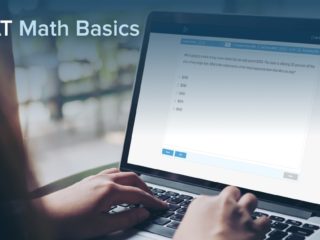
About The Author
Jeffrey Miller is the head GMAT instructor for Target Test Prep. Jeff has more than fourteen years of experience in the business of helping students with low GMAT scores hurdle the seemingly impossible and achieve the scores they need to get into the top 20 business school programs in the world, including HBS, Stanford, Wharton, and Columbia. Jeff has cultivated many successful business school graduates through his GMAT instruction, and will be a pivotal resource for many more to follow.
Leave a Reply Cancel Reply
Save my name, email, and website in this browser for the next time I comment.


What the GMAT Is and How to Prepare for the Test
U.S. News & World Report
August 21, 2024, 8:00 PM
- Share This:
- share on facebook
- share on threads
- share on linkedin
- share on email
Business school hopefuls competing for spots at selective graduate business programs should understand that a stellar score on the Graduate Management Admission Test will improve their odds of acceptance, B-school admissions officials say.
“We really do place emphasis on the reasoning capabilities of candidates, both quantitative and verbal reasoning and data insights,” says Arman Davtyan, assistant dean of enrollment management at Pepperdine University’s Graziadio Business School in California. “Those are building blocks of success, particularly in an MBA program. Through its history, the GMAT has been a pretty good indicator of aptitude and competency in those areas.”
The GMAT is not required by every MBA program, and those that accept it say it’s one part of a comprehensive review. Davtyan says there’s evidence that shows applicants with strong GMAT scores perform well in their first year of MBA studies.
Here’s a comprehensive guide to the GMAT, along with tips for success.
What Is the GMAT?
The GMAT is a standardized business school entrance exam that lasts two hours and 15 minutes, contains 64 questions and includes three 45-minute sections:
— Quantitative reasoning, which measures mathematical abilities and numerical literacy.;
— Verbal reasoning, which evaluates reading comprehension skills, editing abilities and ability to make sense of written arguments.
— Data insights, a new section that evaluates skills in data analysis, data interpretation, data visualization and data-driven decision-making.
“The GMAT essentially tests your executive reasoning skills,” says Stacey Koprince, director of content and curriculum at Manhattan Prep, a Kaplan test prep company. “It does so through asking you questions about things like math and logic and a little bit of reasoning. It’s not really a math test or an academic test.”
Test-takers may start with any section and go in any order. They may also bookmark questions to review at the end and change up to three answers per question.
What Is a Good GMAT Score?
GMAT test-takers who complete the test should expect to receive a score for each section plus a total score.
Total GMAT scores range from 205 to 805 and are reported in increments of 10 points. Section scores range from 60 to 90 in increments of one point.
[ The GMAT Is Changing: Here’s What to Know ]
Schools typically focus more on percentile scores than total scores, Davtyan says. A total score in the 60th percentile — about 575 — is considered competitive for most programs, he adds. However, some top programs have average scores of 717 or higher.
“Because there are multiple sections, ideally we want to see a balance,” he says. “If you’re in 80th percentile on the verbal, but only the 20th percentile on quantitative, that might give us some pause. I’d rather see someone who’s maybe 60/60. We recognize business education is very interdisciplinary, so we really want to see a nice blend of verbal, analytical and quantitative capabilities.”
Luke Parrott, director of graduate admissions with the University of Denver Daniels College of Business in Colorado, says B-school applicants should aim to meet or exceed the average GMAT score at their target grad business programs, and beat the average GMAT score among B-school applicants from their region.
“Every business school has different standards as to where they might expect an applicant’s score to land,” he wrote in an email. “Applicants should learn what the reported average GMAT score is for their admitted students. Based off of this knowledge, one can consider whether they need to find ways to strengthen other parts of their application in order to make a stronger case for their candidacy.”
How Does the Computer-Adaptive Format of the GMAT Work?
Each section of the GMAT begins with a question of average difficulty, then the questions continuously vary in difficulty depending on a test-taker’s accuracy, experts say. So if you get a question right, a harder question usually appears next.
But if you answer a question incorrectly, the next one is typically easier. By the end of the test, the computer calculates a score based on whether you were able to accurately respond to tough questions.
Decision-making is a big part of the assessment and the adaptive nature of the test caters to that, Koprince says. It’s intended to replicate thought processes needed in a business career.
“An adaptive test is essentially built to not allow you to answer everything comfortably,” she says. “You don’t have enough time. It just keeps getting harder when you do well and get questions right. The idea there is that this is like business, where you can’t do everything or say ‘yes’ to every possible opportunity that comes your way.”
How Do I Register for the GMAT?
Most students can register for the GMAT online by creating an account on mba.com, a website run by the Graduate Management Admission Council, then making an appointment through the web scheduling system. Students with disabilities who would like accommodations should fill out an accommodation request form before scheduling their test appointment.
Where and How Often Is the GMAT Offered?
There are GMAT test centers worldwide and throughout the U.S., listed on the “Find a Test Center” portion of mba.com. The test is also available online daily, administered with a live online proctor.
The GMAT may be taken once every 16 calendar days, with a limit of five attempts in a 12-month period. There’s a lifetime limit of eight attempts.
How Much Does it Cost to Take the GMAT?
Prices vary around the world. The current online version of the GMAT costs $300 in the U.S., while the testing-center version costs $275. A limited number of fee waivers may be available at some schools.
[ How to Get Accepted to Multiple Top Business Schools ]
When Should I Take the GMAT?
The GMAT is rooted in college-level material, so candidates applying immediately after their undergraduate program should feel confident taking it soon after graduation, Davtyan says.
“If, on the other hand, you’re 10 to 15 years removed from your past education experience, you really need to devote some time to preparing for it,” he says. “I would not suggest taking the exam cold.”
Why Do Business Schools Use the GMAT?
Experts say business schools use GMAT scores to gauge whether prospective MBA students have the skills to excel in rigorous courses. Nearly 70% of admissions decisions are made based on GMAT scores, says Ashok Sarathy, the GMAC’s vice president of product management.
“The GMAT is probably the only exam that has been designed for and by business schools,” he says. “We work with admissions professionals to say, ‘Now knowing the skills that need to be measured on the exam, how do we make sure that we’re giving you scores that can help you effectively construct the class that you want to bring into your programs?'”
How Long Should I Study for the GMAT?
Experts say GMAT performance generally correlates with the number of hours spent preparing for the exam, but there is no hard-and-fast rule about how much prep time is necessary.
Test-takers should assess their target score, then compare their current score or practice score, Koprince says. “We need to see what the gap is between the two to see how high you want to lift.”
Some test-takers underestimate the time needed to prepare for the exam, experts say. Koprince recommends devoting three to six months to GMAT prep. She encourages test-takers to simulate the test environment by creating an “exam mode” and “study mode” mindset.
“When you first do a problem, you do it in exam mode,” she says. “You time yourself and you hold yourself to that time limit. You’re literally practicing the decisions you want to make for the test.”
Afterward, revert to study mode and practice each question several times with more time available.
Some candidates make the mistake of spending equal time studying for each part of the test, says Kelly Wilson, an MBA and graduate admissions consultant at professional admissions consulting firm Accepted.
“Instead, I suggest my clients identify their weak area and focus more on preparing for that section of the test,” she wrote in an email. “Burnout from studying for the test can be avoided. Yes, this is a high-stakes test. However, I encourage my clients to plan for down time during the period they will be studying.”
[ Read: Does Your College Major Matter in MBA Admissions? ]
Which GMAT Test-Prep Methods Should I Use?
Experts say preparing for the GMAT on your own requires discipline. GMAC provides free test prep material on its website, including a free six-week study planner, 70 GMAT-style practice questions and two full-length practice exams.
“Some of my clients feel they need more support, so they hire test prep tutors to help them sharpen their skills,” Wilson wrote in an email. “Depending on the client, they may self-study, hire a tutor, or join a test-prep class either in-person or online.”
Other third-party test prep providers, such as Kaplan and Princeton Review, also offer practice tests and other materials for a fee.
When Does it Make Sense to Retake the GMAT?
Experts say B-school applicants who are unsatisfied with their current GMAT score and are convinced they can do better often benefit from a retake. But “you need to give yourself time to get better before you get back in there,” Koprince says.
Nervousness or inadequate test preparation could explain a lower-than-expected score on the first try, experts suggest. However, test-takers who do poorly don’t have to send those scores if they improve the next time.
Koprince encourages every MBA candidate to first take the test without worrying about the score, so they have more context for later attempts.
“The only drawback now to retaking the test is the test fee and your own time,” she says. “What I tell my students is to assume from the beginning you’re going to take the test twice. If you don’t need to, that’s a bonus.”
How Can I Improve My GMAT Score?
Score reports give detailed data to help identify your strengths, weaknesses and areas that need focus for your next attempt. Candidates pursuing a specific MBA track should focus more on improving scores in the section most closely related to the skills they hope to demonstrate, Davtyan says.
Koprince encourages test-takers to identify problem areas but also understand that they don’t have to get every question right to score well. She has taken the test several times, scoring in the 99th or 100th percentile, and each time she’s answered questions incorrectly.
“I know what my kryptonite is on the test,” she says. “I look at those questions, chuckle, pick an answer and just move on. You have to be able to have that attitude toward it so you can perform where you know how to perform.”
Searching for a business school? Get our complete rankings of Best Business Schools .
More from U.S. News
3 Ways to Recover From a Bad MBA Interview
4 Surprising Application Mistakes Prospective MBAs Make
What an MBA Degree Is and What You Need to Know
What the GMAT Is and How to Prepare for the Test originally appeared on usnews.com
Update 08/22/24: This article was published at an earlier date and has been updated with new information.
Related News

Biden adviser meets with Qatari leaders to discuss Israel-Hamas negotiations

Separatist group claims deadliest day in recent history in Pakistan’s Balochistan and threatens more

France’s Macron says arrest of the head of the Telegram messaging app wasn’t political
Recommended.

Police return to the home of missing Manassas Park woman and husband suspected in her disappearance

Feds file new indictment in Trump Jan. 6 case, keeping charges intact but narrowing allegations

Sheriff: Mother, father gunned down in bed in Frederick Co. 'rage killing'
Related categories:.

IMAGES
COMMENTS
10 free GMAT Math Problem Solving practice tests with explanations. Our tests contain 100 problem solving questions to help you prepare for the GMAT.
12 minutes. This is just one of 10 free GMAT problem solving tests available on majortests.com. See the problem solving page for directions, tips and more information. GMAT Problem Solving Practice Test 01 . This test has 10 problem solving questions, to be completed in 12 minutes. Free GMAT prep from majortests.com.
GMAT Problem Solving Practice Test 05 . This test has 10 problem solving questions, to be completed in 12 minutes. Free GMAT prep from majortests.com
Want to improve your GMAT Quant? Elevate your GMAT Problem Solving game by learning how to understand, plan, and solve with Manhattan Prep's Stacey Koprince.
Detailed info about GMAT math problem solving questions, including concepts tested, how to approach, and a sample problem with a comprehensive explanation.
Prepare for the GMAT with these official sample GMAT Problem Solving questions, including answers and analysis by an expert tutor.
Of the five different question types you will encounter on the GMAT exam, Problem Solving feels the most familiar to test-takers. After all, most of us have done a considerable number of multiple-choice math questions in our academic careers, so this format is not new. However, what most people don't understand about these particular "math" questions is that the GMAT does not exist to ...
For many test takers, the quantitative section of the GMAT is particularly daunting. The challenging section includes two types of questions: data sufficiency and problem solving. While data sufficiency questions are undoubtedly the more notorious question type, GMAT problem solving questions can also be quite tricky.
Prepare for the GMAT exam with this video lesson on problem solving. Learn how to apply math skills and strategies to answer challenging questions.
The GMAT Problem Solving questions will test your ability to evaluate information and solve numerical problems. Our practice problems are designed to be very challenging in order to prepare you for the harder-level questions found on the GMAT.
Free GMAT Practice Questions Practice makes perfect—or at least that's how the old saying goes—and it certainly applies to our free GMAT practice questions. Our Free Practice Questions are designed to give you the thorough understanding of how to go about solving a problem that you crave.
GMAT Problem Solving Practice Test 02 . This test has 10 problem solving questions, to be completed in 12 minutes. Free GMAT prep from majortests.com
Note: GMAT Quant questions cover Problem Solving, and so much more. To get more math practice, try our free GMAT practice test with accurate score prediction and subject-by-subject performance breakdown.
GMAT quant covers 21 major math topics from the disciplines of arithmetic, algebra, coordinate geometry, number properties, and statistics. The 21 questions in the Quantitative Reasoning section are all 5-option multiple-choice problem-solving questions.
Enhance your GMAT Problem Solving skills with expert replies, tackle hard questions, and engage in active discussions at GMAT Club.
Struggling with GMAT Quant section? Our GMAT math tricks and tips can help quickly raise your score on both problem solving and data sufficiency.
Prepare for the GMAT with these official sample GMAT Problem Solving questions, including answers and analysis by an expert tutor.
Determine your desired score and approach the exam with a positive and confident mindset. In conclusion, solving problem-solving questions in the GMAT Quantitative section requires practice, strategy, and time management. Utilize online resources, practice tests, and review the basics of math concepts tested on the exam.
GMAT Problem Solving Practice Test 10. 1. Courier charges for packages to a certain destination are 65 cents for the first 250 grams and 10 cents for each additional 100 grams or part thereof. What could be the weight in grams of a package for which the charge is $1.55 ?
GMAT Problem Solving questions are the most common type of quant question. Mastering these will definitely give you a leg up on getting a great score!
Problem Solving questions constitute a major chunk of the Quant section of the GMAT. Here, we will discuss about GMAT Problem Solving Questions in detail.
We have hundreds of GMAT practice questions arranged into mini tests, each mini test has a score card at the end. We also give you explanations to the questions you get wrong so that you can learn from your mistakes. Use the menu on the left to get more information about the test sections, or choose a question type and do a test now.
A Problem Solving question can test you on any of the 21 major Quant topics or the hundreds of subtopics. Let's look at a few examples to get a feel for GMAT Problem Solving questions.
GMAT test-takers who complete the test should expect to receive a score for each section plus a total score. Total GMAT scores range from 205 to 805 and are reported in increments of 10 points.